Chimaera in brief
Dashboard
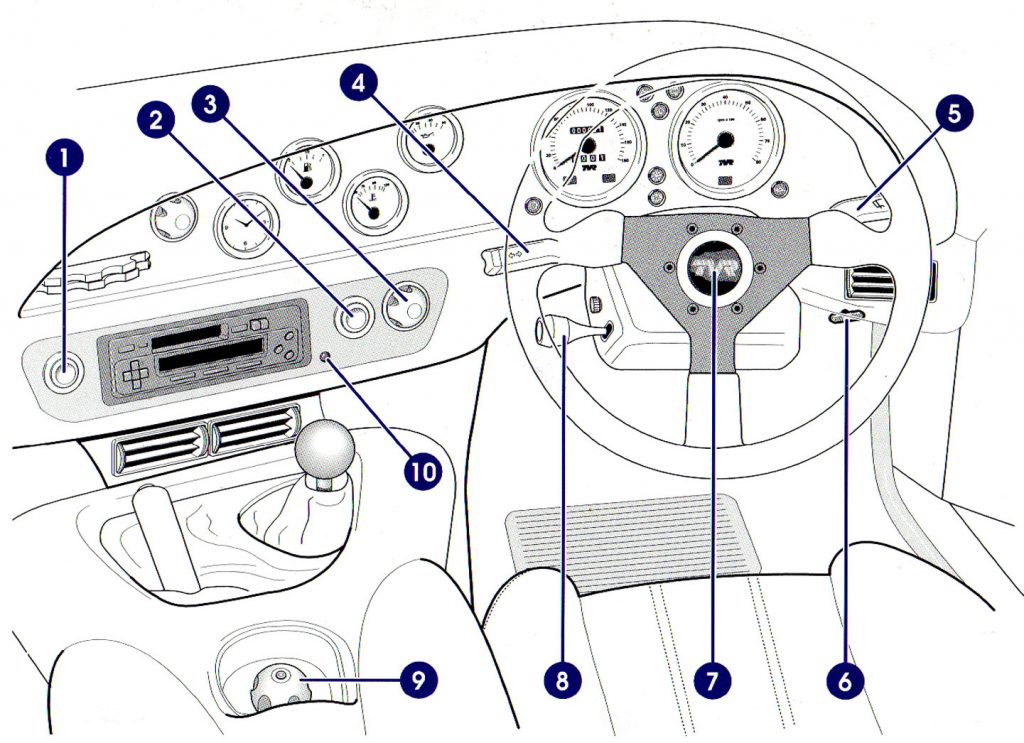
- Hazard warning light switch
- Rear fog light switch
- Main light switch
- Indicator, headlight flash and main beam stalk
- Windscreen wiper and washer stalk
- Bonnet release
- Horn
- Lever for adjusting steering wheel angle
- Door release control
- Alarm led
Warning and tell tale lights
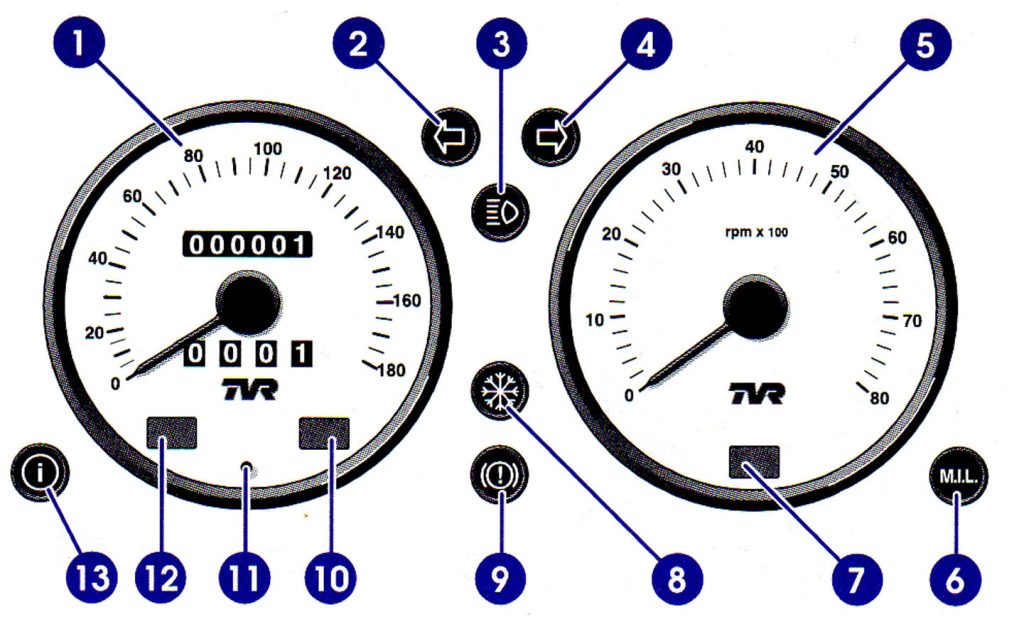
- Speedometer
- Left turn indicator
- Full beam warning light
- Right turn indicator
- Rev-counter
- MIL,-Fuel injection warning light
- Not used
- Ice detector
- Brake system warning light
- Ignition warning light
- Trip distance reset button
- Oil pressure warning light
- Inertia switch warning light
Left turn indicator light (green)
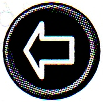 | Flashes simultaneously with the left hand indicator. |
Right turn indicator light (green)
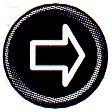 | Flashes simultaneously with the right hand indicator. |
High beam headlights
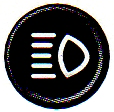 | Illuminates when the headlights are on high beam or when the headlight flash is operated. |
Ice detector
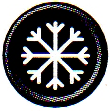 | Upon switching on the ignition, the ice detector will go through a series of checks. |
The light will briefly illuminate green, orange, then red and then extinguish, While driving the light operates as follows green – air temperature is 4°C – 2°C orange – air temperature is 2°C – 0°C red – air temperature is 0°C or less.
Please note: This device is intended to offer the driver an indication of current road and weather conditions in order that the driver can modify their driving style appropriately. It should not, however, be regarded as a fool proof guide to current road conditions. TVR Engineering Limited do not accept any liability for any consequential or other losses howsoever arising as a result of the driver relying solely or in part upon information given by this device.
Brake system warning light
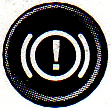 | Illuminates with the handbrake to check the circuit, if it comes on without the handbrake, the brake fluid level is too low. |
Inertia switch warning light
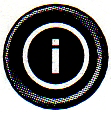 | The light will illuminate if the inertia switch has been tripped This will happen in the case of an accident. If it requires resetting consult your dealer. |
Engine management warning light
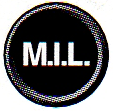 | There is a problem with the fuel injection or emission system. |
Ignition warning light
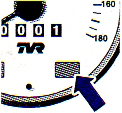 | Goes out when the engine is started, if the light remains on or comes on while driving switch off the engine and consult your dealer. |
Oil pressure warning light
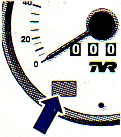 | Goes out when the engine is started, if the light remains on or comes on while driving switch off the engine immediately and consult your dealer, Considerable damage could result if the car is driven with the light on. |
Ignition and steering lock
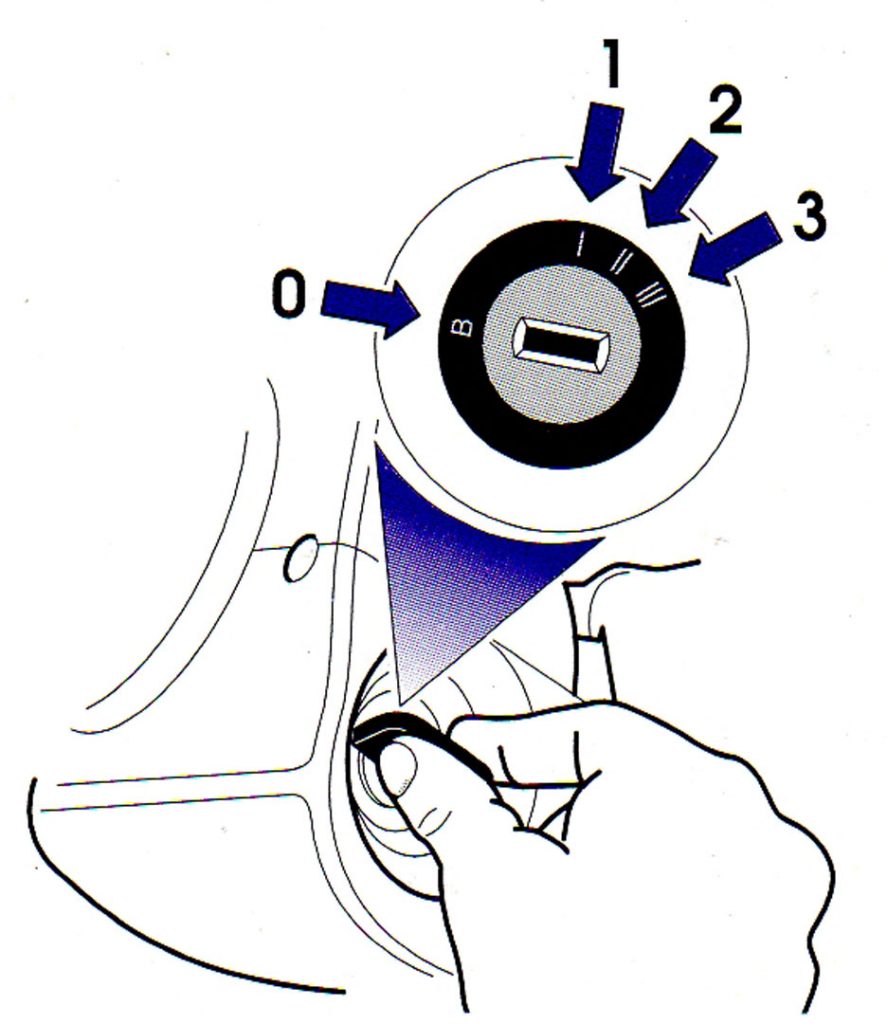
The ignition key switch has four distinct clockwise positions:-
Position 0 The steering is set to lock upon removal of key.
Position 1 The steering lock is released but the ignition remains off.
Position 2 Ignition and all electrical circuits are on.
Position 3 Starter motor is engaged and engine will start.
Starting the engine
- Apply the handbrake and insert the ignition key into the steering column ignition lock.
- Depress the clutch pedal. Put the gear lever into neutral.
- Turn the key to position 1 to release the steering lock, (move the steering wheel slightly if necessary)
- Turn the key to position 2 to activate electrical circuits, (The fuel pump will be heard pressurising the fuel system.)
- Turn the key to position 3 to engage the starter motor. The engine will start (minimum use of the throttle pedal may be needed during the engine start sequence.)
- If engine fails to start, return the key to position 1 and repeat steps 4 and 5.
- Important – where necessary only short repeated engine cranking periods should be used, as long cranking periods cause unnecessary wear to the starter motor and causes unburnt fuel to be deposited into the catalyst/exhaust system.
Horn
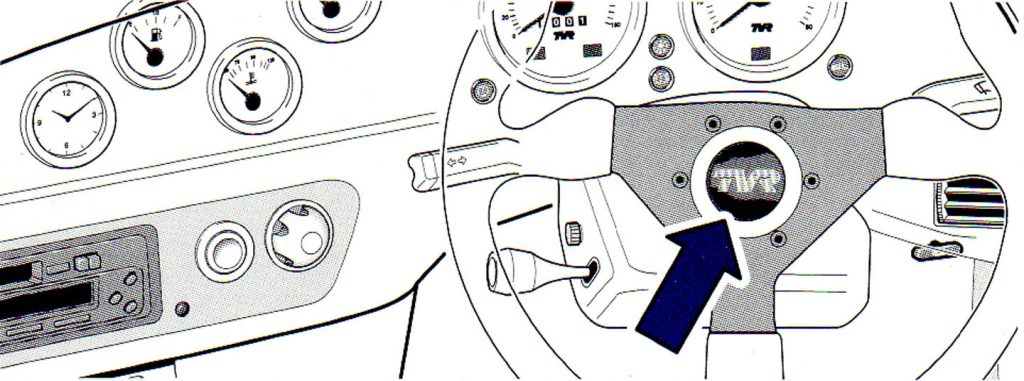
Press the centre of the steering wheel to sound the horn. The horn works independently of the ignition being switched on.
Running in
Running in
The purpose of running in is to allow the new engine components to bed in correctly. To gain maximum performance, service life and general reliability, the best policy to adopt during the run in period is to avoid high engine rpm, large throttle openings, and most importantly, not allowing the engine to labour in a high gear.
Recommended rpm during the running in period
Starting the engine from cold. 0-1000 miles, rpm should not exceed 2500 rpm until the engine is warm. 0-250 miles, max rpm should not exceed 3500 rpm whilst the engine is hot,
250-2000 miles, rpm should be gradually increased until full power and max rpm for the vehicle is achieved.
Tyres
To obtain the maximum performance from the tyres, during the 0-500 mile period, it is advisable to avoid excessive braking and cornering whenever possible.
Brakes
To bed the brake pads in correctly, avoid excessive braking during the first 500 miles, unless required to do so in an emergency.
Refuelling
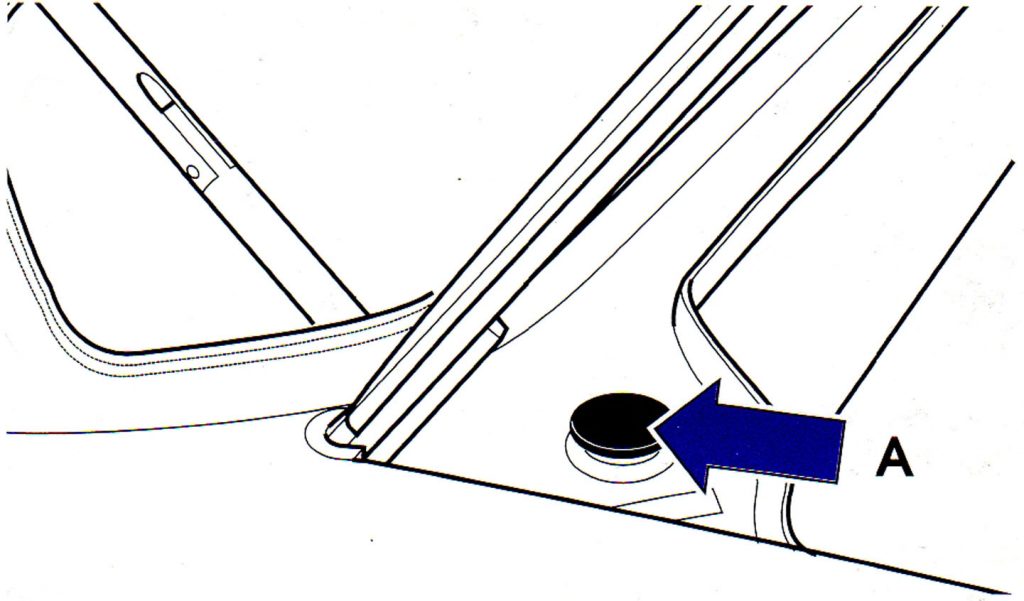
The fuel filler cap is located in the boot, next to the left boot hinge. Unscrew the cap by turning anti-clockwise, Please note. Any petrol spilt onto the paint work should be washed off immediately to prevent staining. The TVR Chimaera is designed to run exclusively on unleaded fuel and is fitted with a narrow fuel filler neck, making it compatible only for unleaded fuel pumps at petrol stations,
Fuel type required
Unleaded only, see the label next to the filler cap
Check the tyre pressures regularly
Bridgestone S02 tyres
Front 205/55 ZR15 22 lbs sq/in w
Rear 225/50 ZR15 24 lbs sq/in
Spare 60 lbs sq/in
For high speed continental driving or when fully loaded with luggage
Front 25 lbs sq/in
Rear 28 lbs sq/in
Instrumentation
Keys
There are no door keys with your Chimeara, see the next section on the alarm.
Alarm
Alarm & Locking
The Alarm System installed in your vehicle has been designed to provide optimum protection at all times. The System uses a Contact key and a Rolling Code Radio key which never uses the same code twice and is therefore code grabber proof. The alarm and the immobiliser systems of the car are linked but run on different circuits to prevent total alarm/immobiliser failure.
Operation of the alarm system
15 seconds after the ignition is switched off the immobiliser will always arm (even if you do not exit the vehicle) but the alarm will not arm. If you wish to drive the vehicle then simply press the button on the radiokey for less than two seconds or insert contact key, to switch off the immobiliser.
Locking & Using your Radiokey
Exit the vehicle, ensuring both doors and windows are closed, Press the button on the radiokey once for two seconds, and release. Your car will acknowledge the signal by flashing its hazards lights four times and activating the central door locking, Your alarm is now armed but will take an additional 30 seconds is required for the motion detector to stabilise and become active. A red warning light mounted in the lower veneer panel will begin to flash to act as a visual deterrent.
Unlocking & Disarming the alarm
As you approach the vehicle, press the button on the radiokey, The vehicle will acknowledge the signal by flashing its hazard warning lights once and unlocking the doors. Once unlocked, to gain entry to the vehicle, press the exterior door release button located under the door mirror. Please note: If you do not turn the ignition on within 15 seconds of disarming the alarm, the immobiliser will become active. Should entry to the vehicle not be possible due to a system malfunction, access can be gained by pulling the emergency door release lever. This lever is located in the boot on the top of the drivers side wheel arch. Pull the red lever towards you to release the drivers door.
Personal Protection
As a measure of personal protection, you may trigger your siren by pressing the button down for six seconds. The siren will sound and the hazard lights will flash for 15 seconds.
Electronic contact key operation
Should you need to disarm the immobiliser without the use of the radio key, this can be achieved by using one of the small contact keys provided. On entering the vehicle, the contact key should be inserted into the override key receptacle mounted next to the ignition key on the column shroud. The small LED will be flashing to show the vehicle is immobilised. On insertion and removal of the contact key, the LED will be extinguished. The vehicle can now be started,
System diagnostics
The alarm system is capable of indicating whether the alarm has been triggered in your absence. The LED mounted at the centre of the dash will flash in one of the following sequences to indicate which circuit triggered the alarm:-
- Door trigger 2 flashes every 6 seconds
- Internal sensor 4 flashes every 6 seconds
- Panic facility 16 flashes every 6 seconds
Electronic contact key
Should you need to disarm the immobiliser without the use of the radio key, this can be achieved by using one of the small contact keys supplied. On entering the vehicle, the contact key should be inserted into override key receptacle mounted adjacent to the ignition switch. The small LED will be flashing to show the vehicle is immobilised. On insertion and removal of the contact key, the LED will be extinguished. The vehicle can be started. The alarm will sound for 30 seconds, The facility is for use in emergency situations only. Contact your nearest dealer for full alarm service.
Doors
Opening the doors from the outside
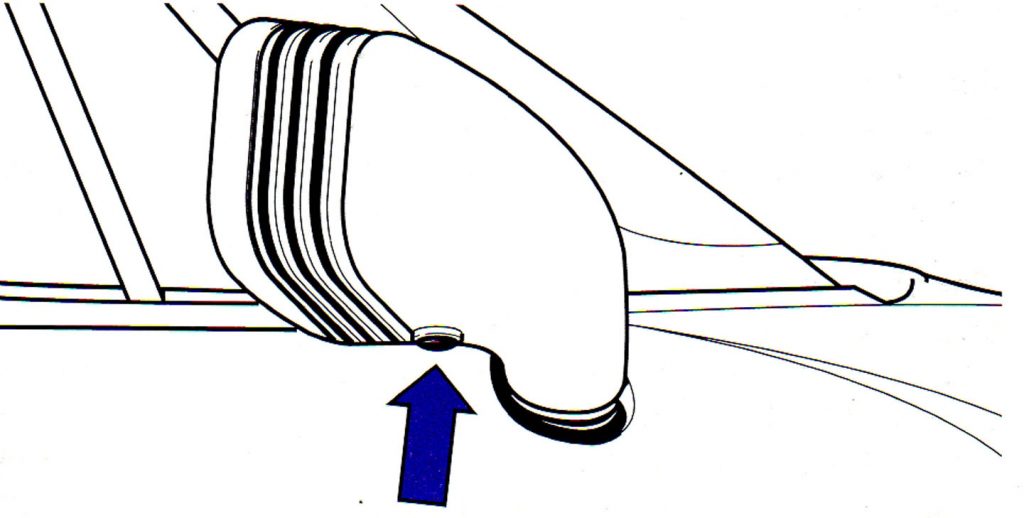
Press the button underneath the door mirror, the door will pop open slightly.
Interior door release and interior door locking
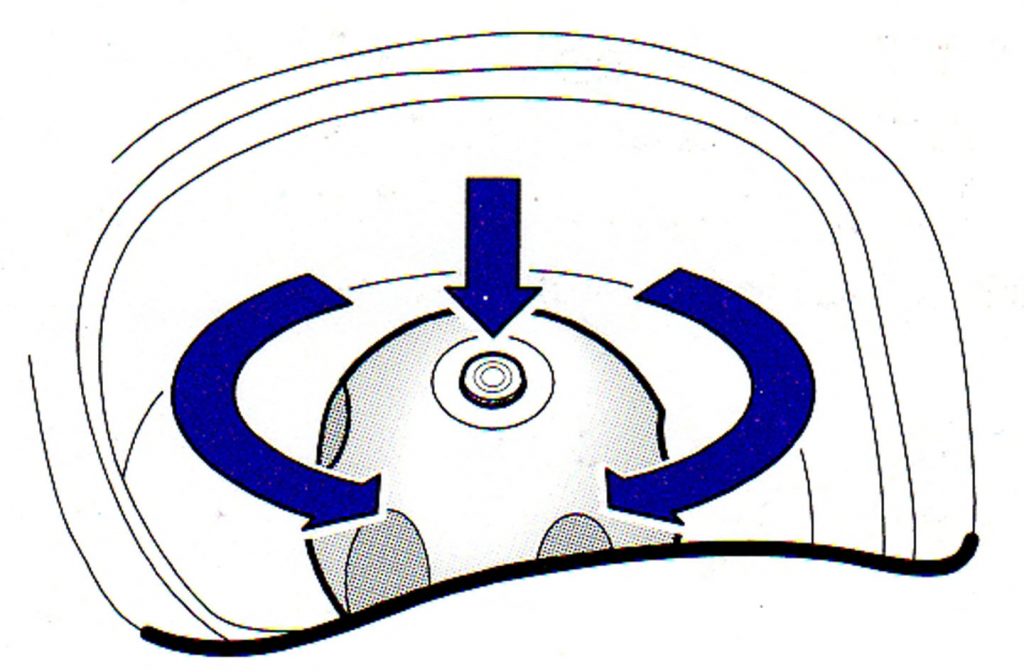
Located on the transmission tunnel behind the gear knob. Turn the knob clockwise to open the drivers door and anti-clockwise to open the passenger door, Warning. Take care in high winds as the door will pop open slightly. To lock the doors from the inside, press the button on the top of the knob, The button will illuminate (providing the ignition is on) when the doors are locked. The doors will unlock automatically when the knob is turned to open the doors. This is a peace of mind feature regarding personal security.
Seats
Moving forward/back
Move the lever (A) located beneath the seat and slide the seat to the correct position making sure that the locking mechanism has engaged.
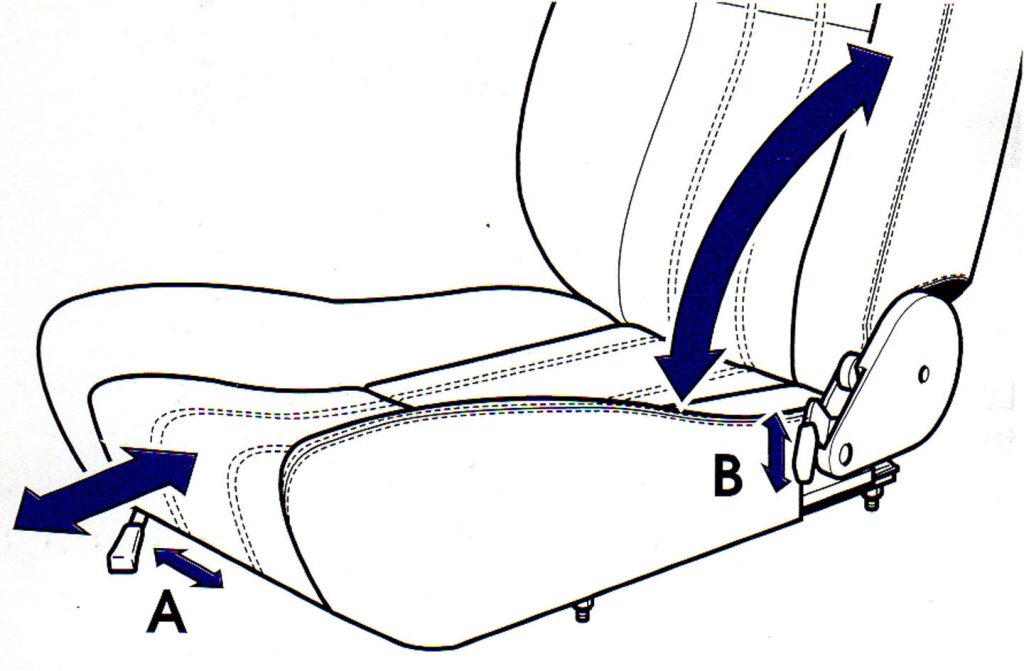
Seat Reclining Control
To adjust the angle of the backrest, lift the lever (B)located on the outer edge of the seat by the pivot point, Tilt the backrest to the required angle, Release the lever and ensure that the locking mechanism has engaged,
Lumbar Support (where fitted)
To adjust the lumbar support, squeeze the pump located on the inner edge of the seat, until the required support is attained. To reduce the amount of support press the button located on the pump.
Head restraints
To adjust the height of the head restraints, pull the restraint up or down to the required position, (the centre of the headrest should be approximately level with the eye line), Please note. It is important that the head restraints are adjusted for individual drivers and passengers to offer full restraint in the event of an accident. Failure to do so could result in injury from the slightest accident.
Steering Wheel angle
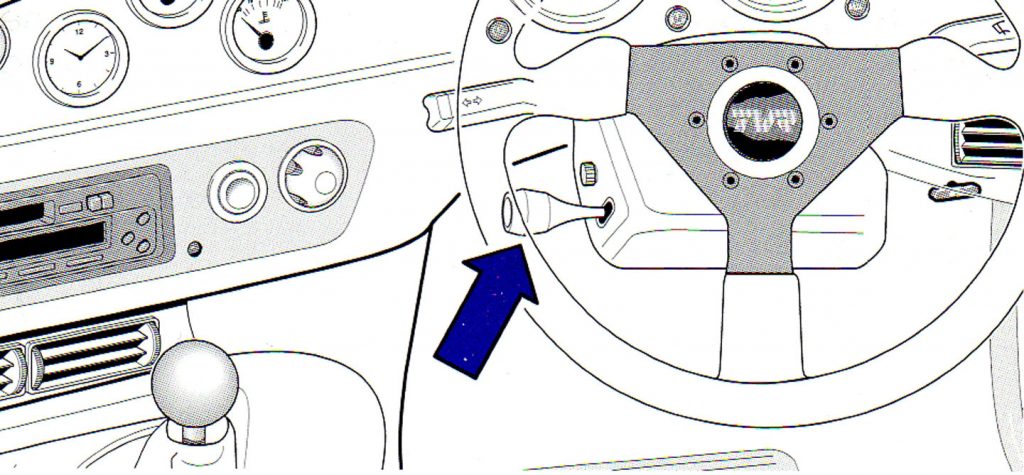
Located on the left hand side of the steering column. Pull the lever towards you to release the column and adjust to the required position. Release the lever to secure the column. Warning It is not recommended to adjust the steering wheel angle while you are driving.
Mirrors
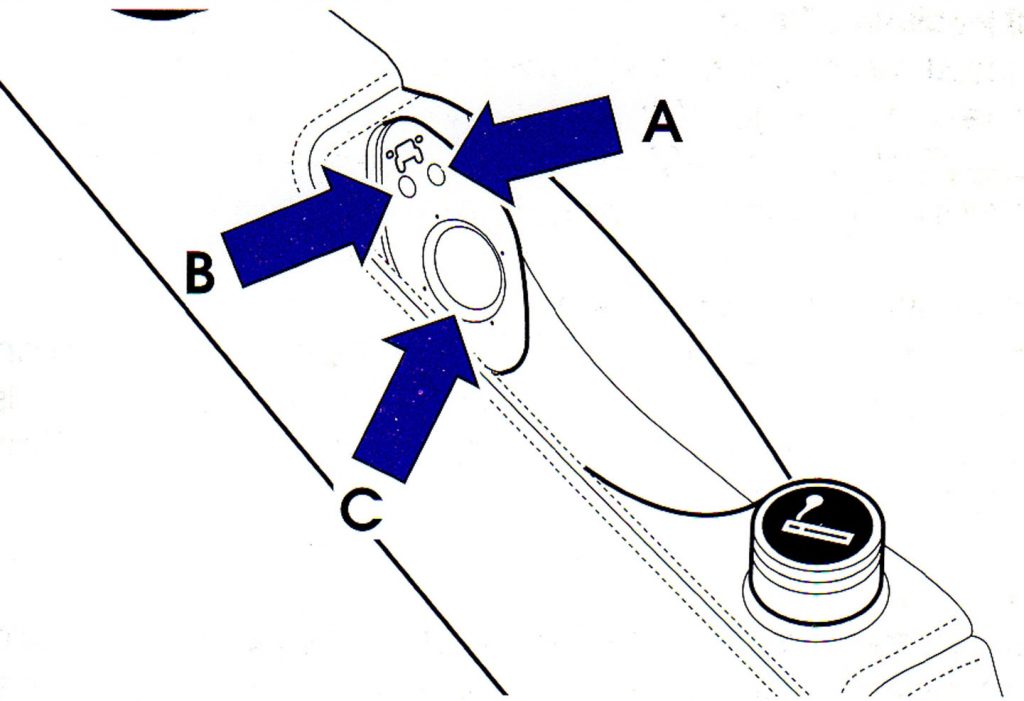
Located on the drivers side armrest. To adjust the mirror position, first select the mirror to be adjusted with switch A or B. Then adjust with the directional button C, press the top to move the glass up, press the left to move the glass left etc, (for best results press the raised ridge section of the switch).
To prevent the mirror being adjusted by accident there is a lock out feature. To set to lock out press buttons A and B simultaneously.
NOTE. The system will automatically go into lock-out mode each time the ignition is switched on.
To release the system from lock-out press button A or B for longer than 1 second,
The mirrors are heated on an automatic time delay when the engine is started.
Seat Belts
Ensure that the seat belt is not obstructed in any way when fitting. When fastening make sure the catch clicks in. When releasing the belt press the red button on the catch, the belt may need to be guided back to assist the reel, make sure the belt is fully retracted before leaving the vehicle.
Clean the seat belt webbing using soapy water. Do not use solvents or abrasives to clean the webbing.
Light Switches
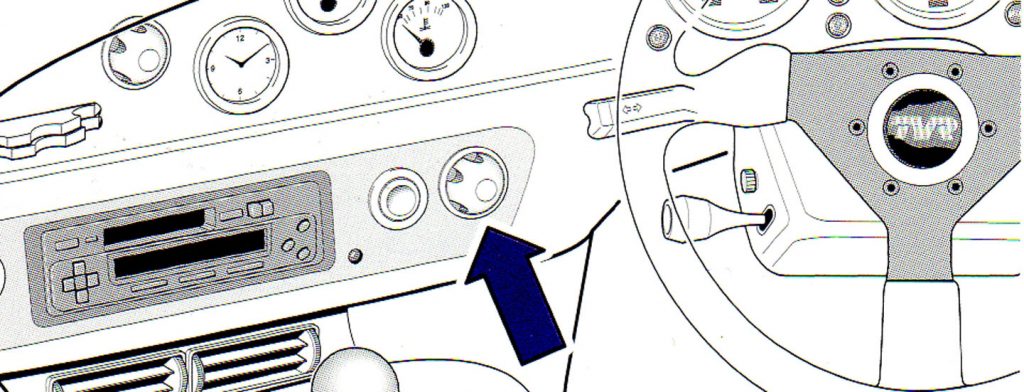
Side lights and dipped headlights
Turn the switch clockwise one click to operate the side lights and instrument illumination. Turn the switch clockwise a second click to operate the headlights. To switch off reverse the procedure. The lights work with the ignition on or off.
Instrument lighting
May be turned off by pressing the switch under the dash to the left of the steering column.
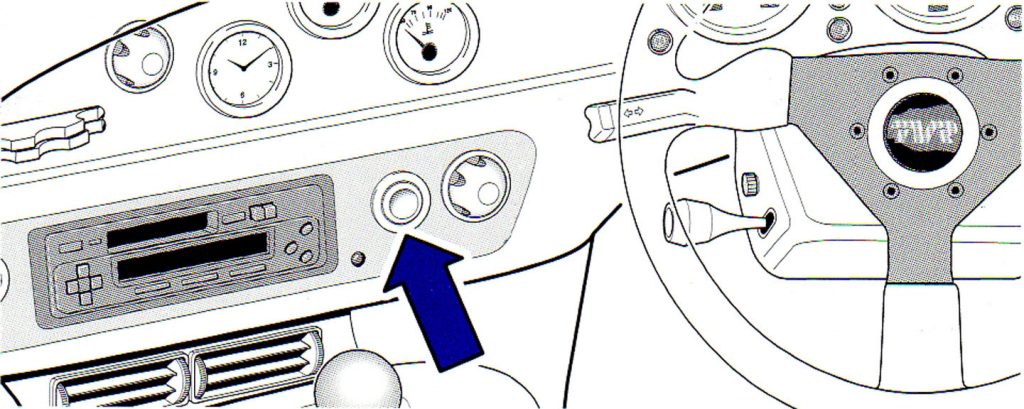
The rear fog light will only work when the dipped headlights are on, the switch surround illuminates amber when the fog light is in use.
Indicator switch
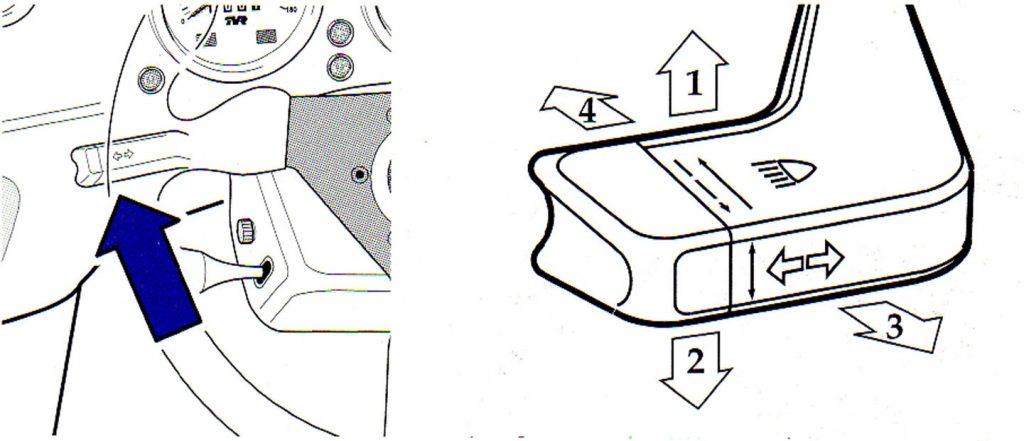
Position i. Right hand turn indicator. Position 2. Left hand turn indicator. Position 3. Main beam flash, Operates only when the ignition is on.
Position 4, Main beam. Operates only when the headlamps are on.
If the indicator warning light flashes more frequently than normal a bulb has blown.
Hazard warning lights
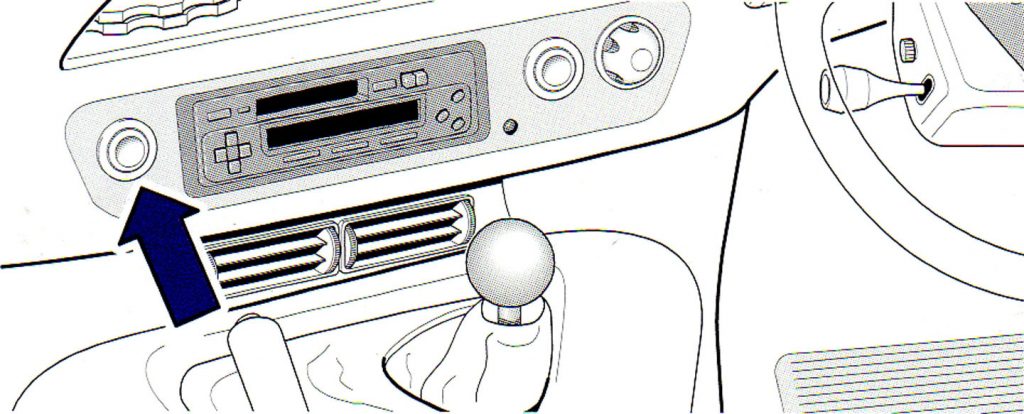
Should the vehicle become immobile or present a hazard to other road users, all turn indicators may be operated in unison as a hazard warning. Depress the button to activate the hazard warning lights. Depress the button once again to deactivate the hazard warning lights. The switch surround will illuminate red and flash while the lights are operating.
Interior light
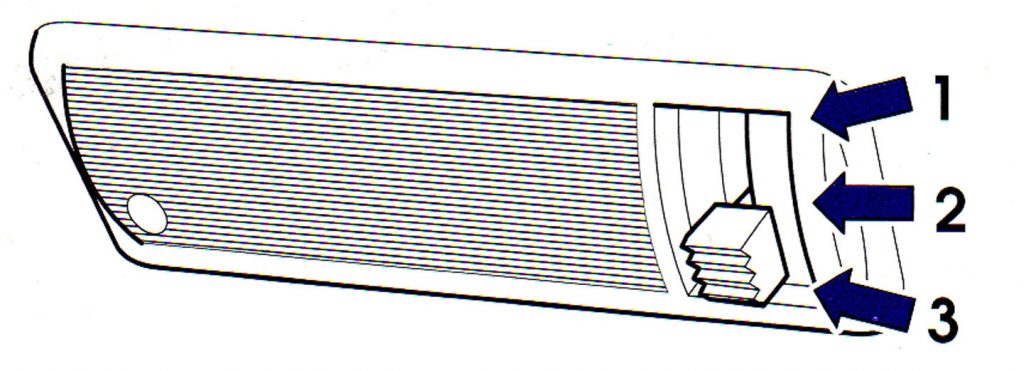
The interior light is located in the centre of the rear header rail.
Position 1 permanently on
Position 2 permanently off
Position 3 will illuminate when either of the doors are open. After closing the doors the light will remain lit for approximately 20 seconds or until the ignition is switched on.
Wiper and washer switch
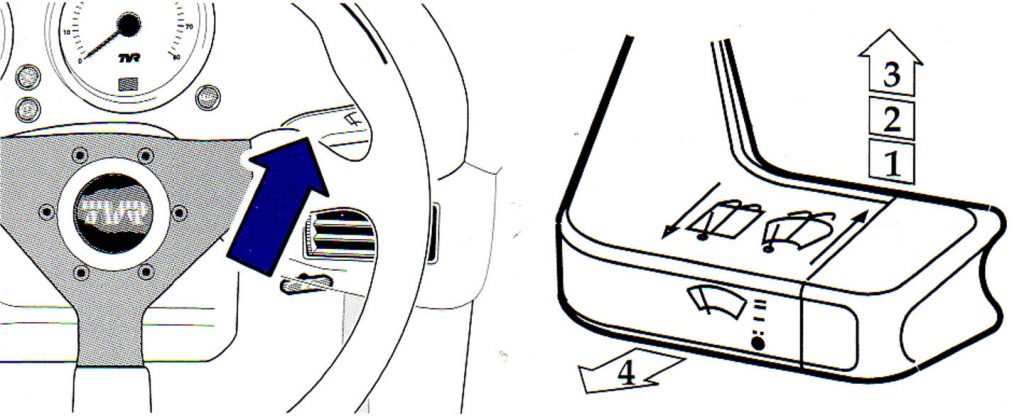
Position 1 Intermittent wipe.
Position 2 Normal wiper speed.
Position 3 Fast wiper speed.
Position 4 Screen wash and wipe. The wipers will operate, along with the washers, for a few seconds and then stop automatically.
Intermittent wipe speed
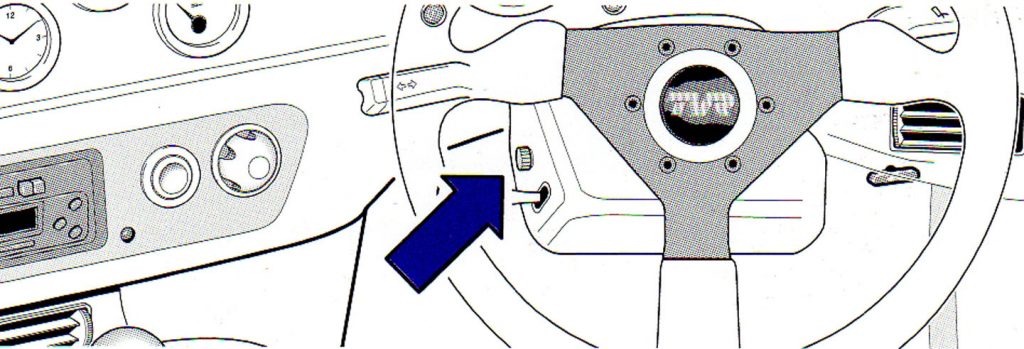
Turn the knob to increase or decrease the time between wipes.
Handbrake and Gear lever
Handbrake
To apply, pull the handle upwards while depressing the button at the end of the lever. Release the button at the end , of the levers travel, When the lever is in this position the rear brakes are on and the warning light will illuminate, To release, press the button and lower the lever to its lowest position.
Gear lever
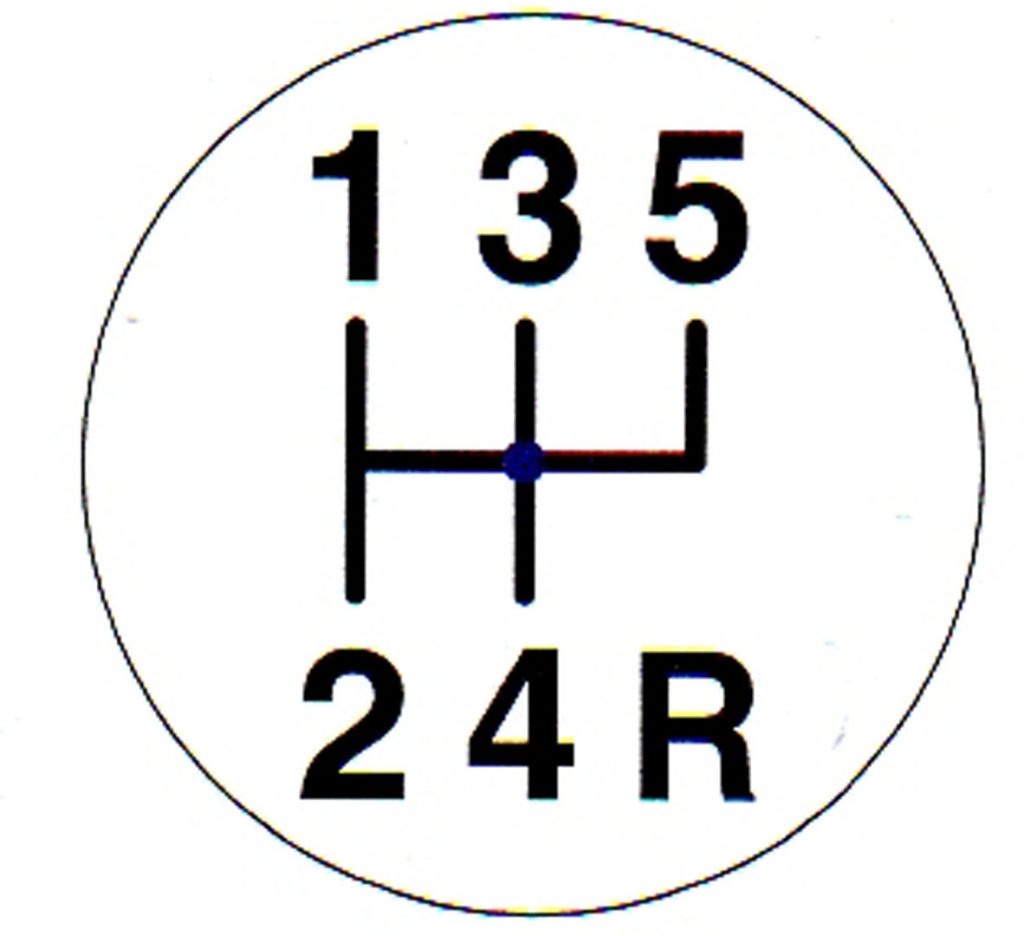
The gear levers natural position in neutral is between 3rd and 4th (marked by the dot).
To engage reverse gear, pull the lever across to the right, and then back to the right hand corner, The reversing light will illuminate providing the ignition is on. Only engage reverse whilst the car is stationary.
Heating and ventilation
Heater dials

Top (A)-temperature control-to set the temperature to hot rotate to the left, for cold rotate to the right, Intermediate settings are available in between. The air can be boosted by the fan.

Bottom(B)-direction control-To demist the screen rotate the control to the right, for the footwells and vents rotate the control to the left, Intermediate settings are available in between, The air can be boosted by the fan.
Fan

The fan operates by pushing the switch in. For low speed operation turn the fan switch anti-clockwise, for high speed operation clockwise. To turn the fan off press the switch again. N.B. The fan will only operate whilst the ignition is on
Positions of vents
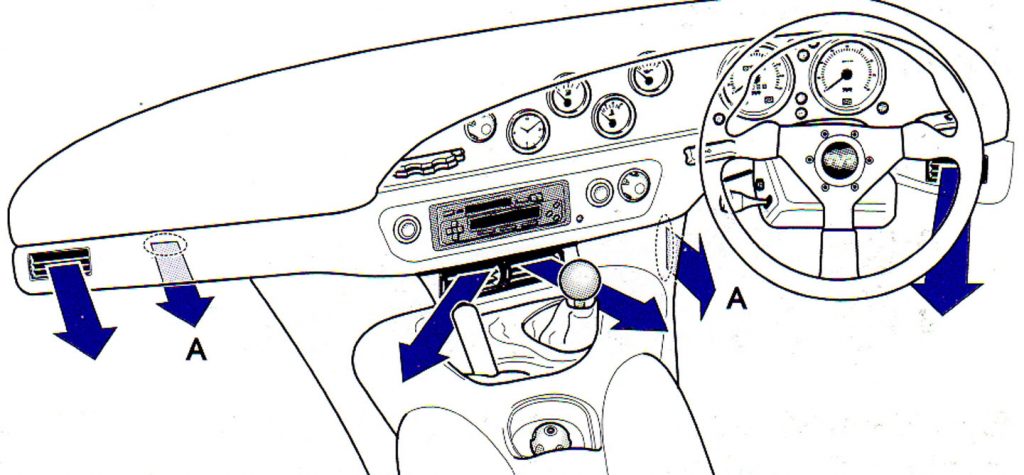
All vents can supply both hot or cold air from the heater and can be boosted by the fan. Each vent is directional and can be opened or closed independently, The vents marked A are not visible but are of the type shown below.
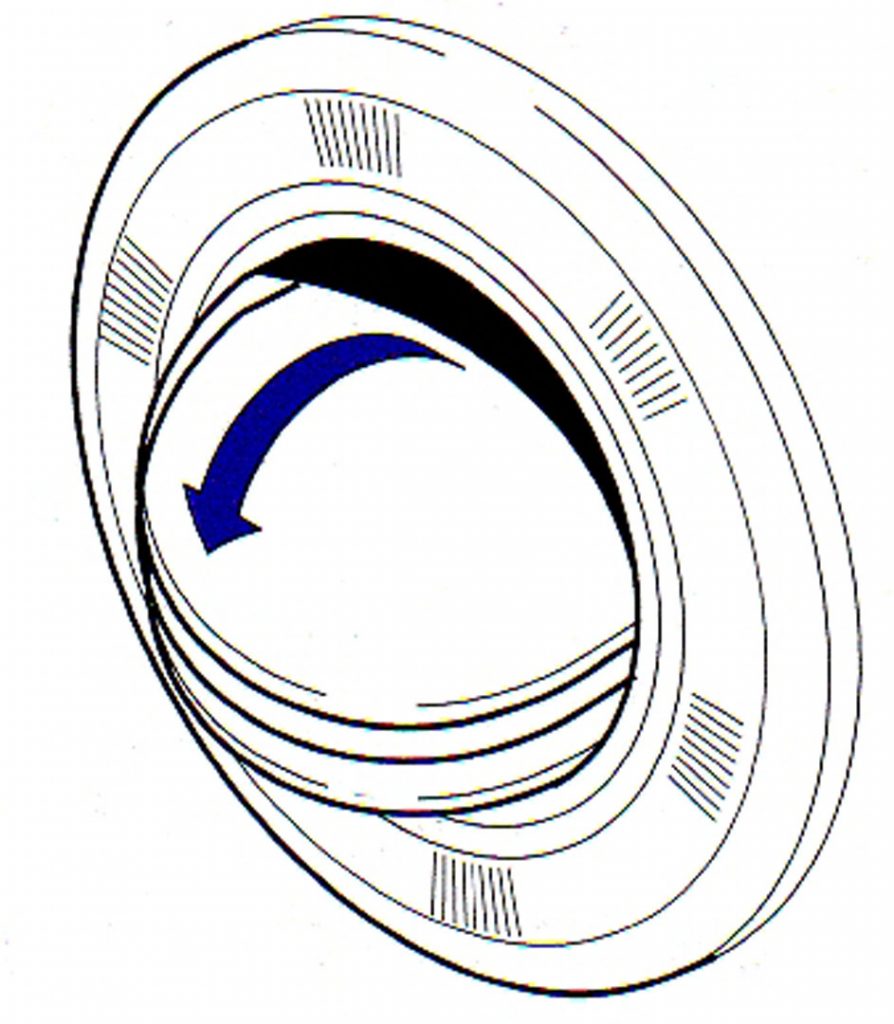
Air conditioning
Air conditioning (where fitted)
The air conditioning system supplies cooled and dehumidified, fresh or recirculated air to the interior of the vehicle. The volume of conditioned air supplied is controlled by the fan. To activate the air conditioning system, rotate control A all the way over to the right.
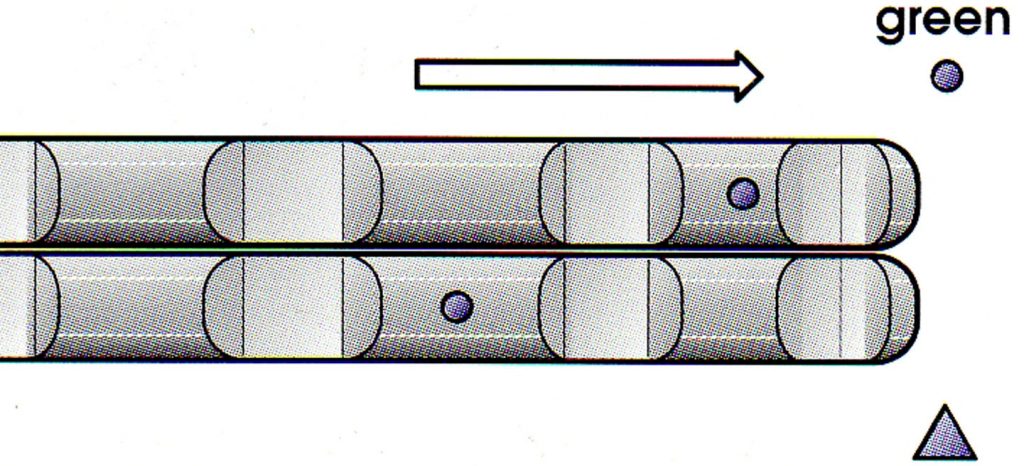
This will then actuate a microswitch which will turn the air conditioning unit on.
Air recirculation
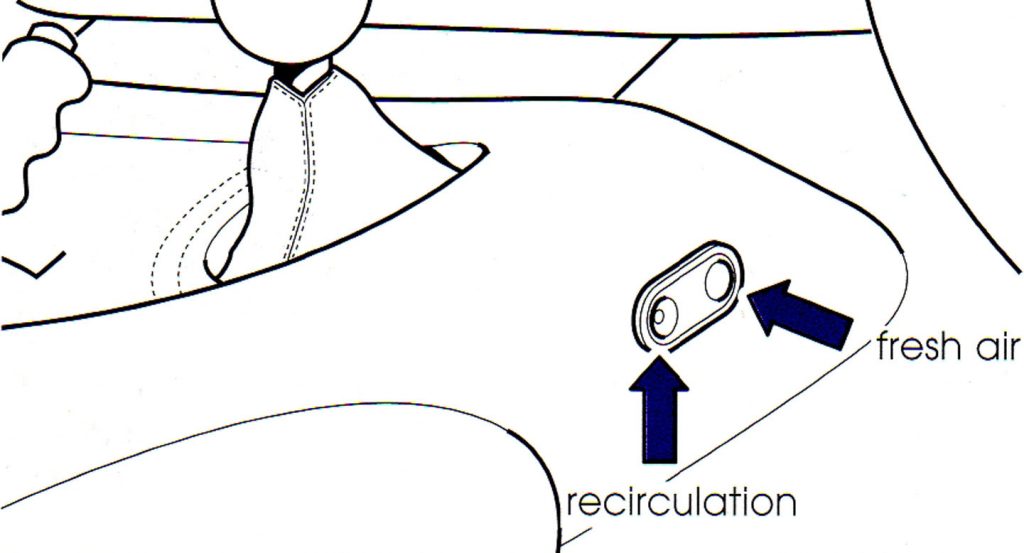
For fresh air circulation press the forward section of the switch. for internal air recirculation press the rear section of the switch intermediate settings are available between the two positions.
Please note. The air conditioning system operation is more effective when the roof panel is in position, the windows are closed and the air circulation switch is set for full internal air recirculation.
To maintain efficient operation of the system, it should be used at least once every week, summer or winter.
Instrumentation
Speedometer
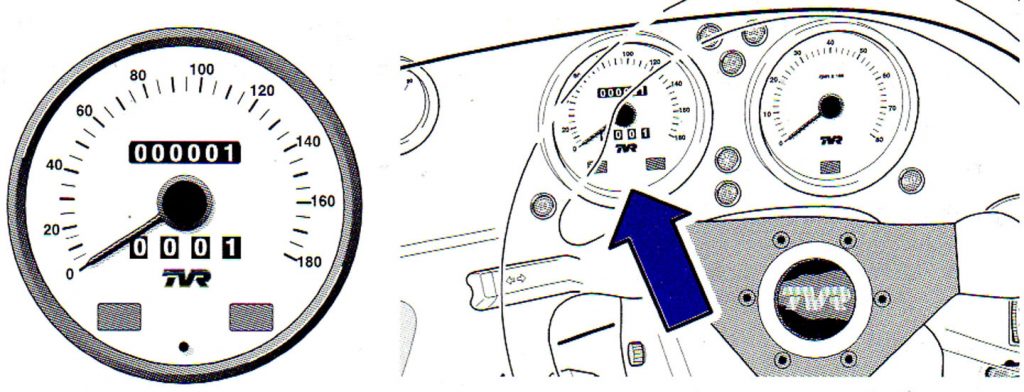
Indicates the vehicles speed in both miles per hour (Mph) and kilometres per hour (Kph). The vehicles total mileage is recorded on the odometer.
The trip recorder measures up to 999,9 miles, to reset to 0 press the black button at the bottom of the speedometer.
Rev. counter
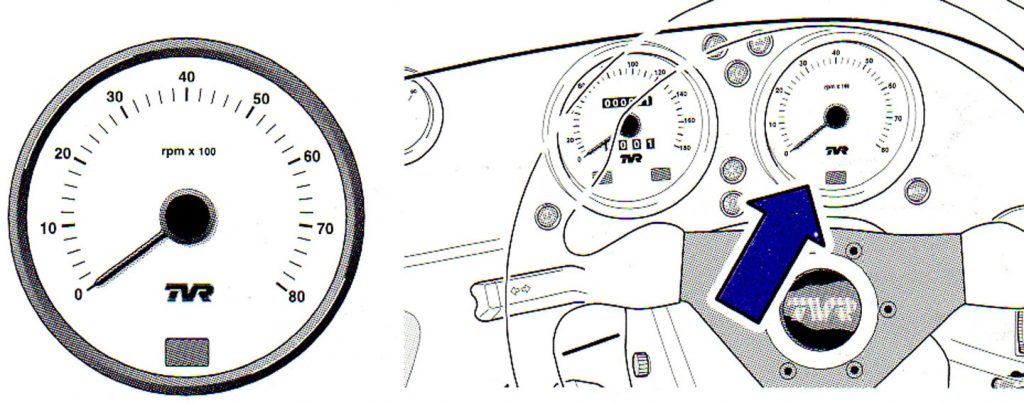
Indicates the engine revolutions per minute (RPM) of the vehicle. Each figure indicated on the gauge should be multiplied by 100 to give a true figure. Maximum RPM should not exceed 3000 when the engine is cold or running in.
Oil pressure gauge
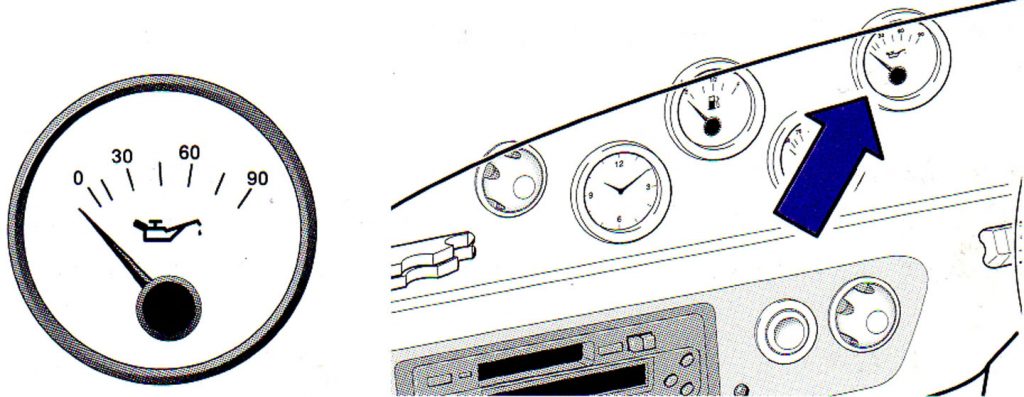
Once the engine has been started, the gauge may take a few seconds before a stable reading is displayed, The engine oil pressure should not fall below 10 pounds per square inch. Should the gauge fail to register or there is an appreciable difference in normal working pressure, switch off the engine immediately, Considerable damage could result if action is not taken to rectify the fault.
Fuel gauge
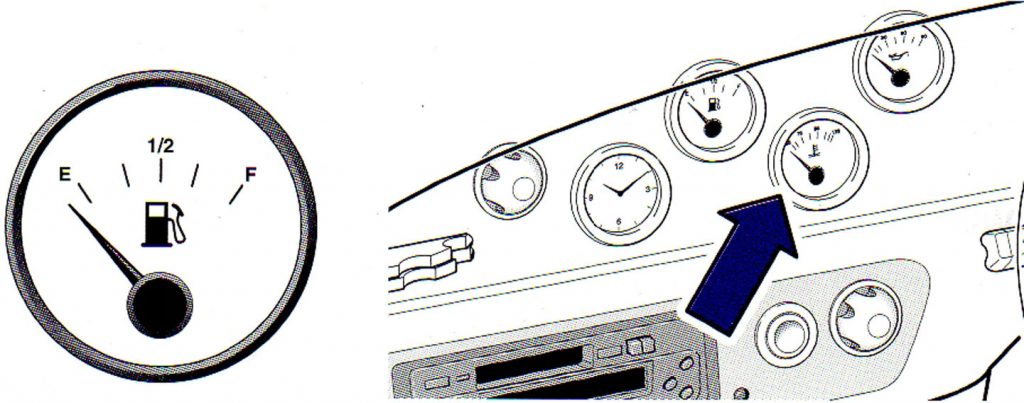
Indicates the approximate fuel contents within the fuel tank, Please note that there is no reserve tank facility.
Water temperature gauge
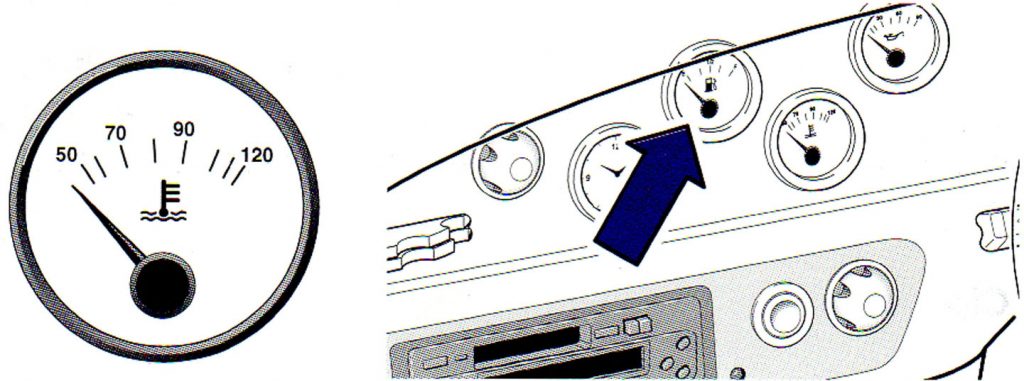
Indicates the temperature of the engine coolant at all times when the ignition is on. The normal working temperature should register approximately 90° on the gauge. Should the gauge register to the far right and remain in that position, stop the car immediately and switch off the engine. WARNING Do not remove the water cap when the engine is hot.
Clock
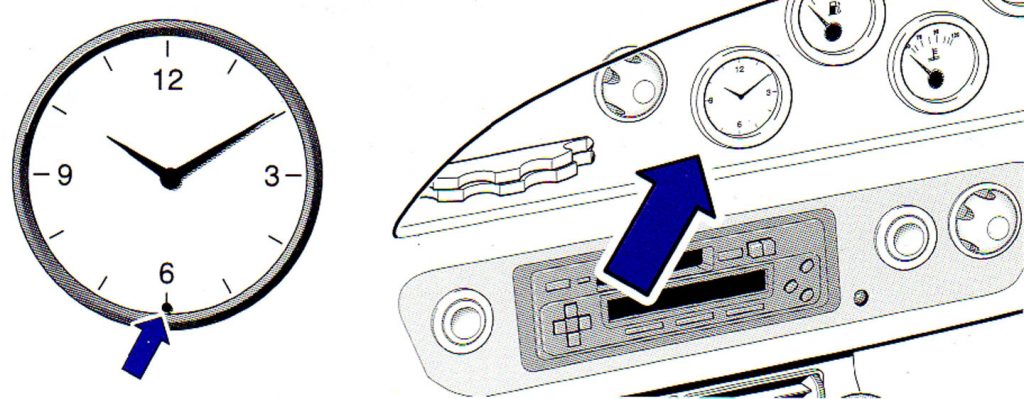
To reset the clock press the button and hold until the required time is displayed.
Electric windows
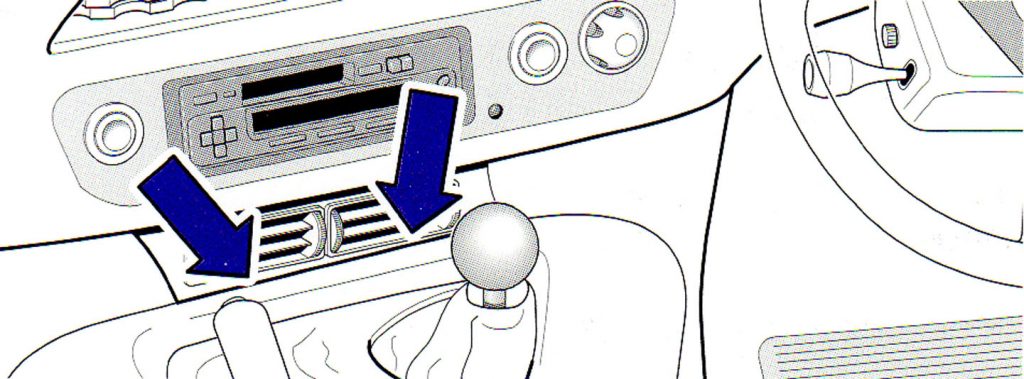
To lower the side window press the forward half of the switch, maintaining the pressure until the desired window height is achieved. To raise the window press the upper half of the switch.
Cigar lighter
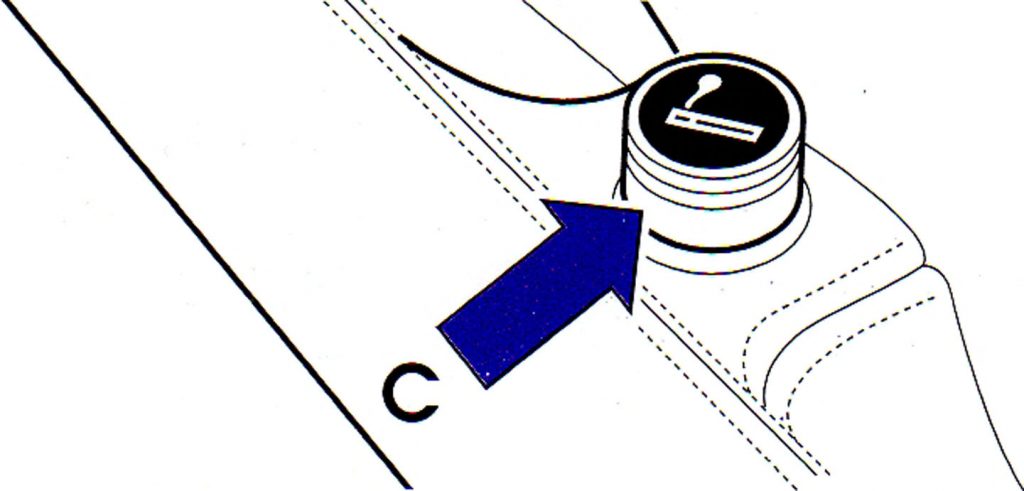
Located on the drivers side armrest. To operate press the button in the centre and release. The button will eject back to its original position when ready for use (approximately ten seconds).
Bonnet release
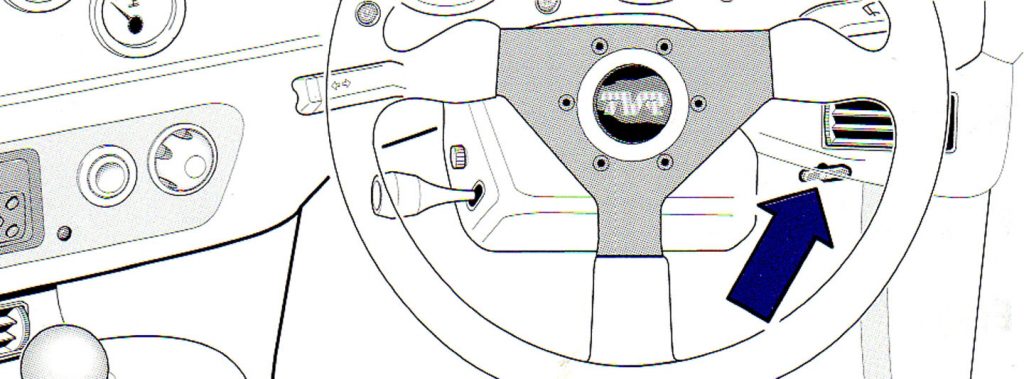
Pull the lever to release the bonnet catch. Lift the rear edge of the bonnet up and forwards. Pull the bonnet stay out of its clip and locate the socket on the ball joint. To lower the bonnet, pull the socket away from the ball joint and return it — to its clip. Lower the bonnet down pressing smartly on the rear edge in front of the windscreen wiper pivot point, to locate it on its latch,
Boot release

Press the switch (which is not visible but under the dash) to release the boot from its catch.
To close the boot, lower the lid onto the catch and press firmly down on the boot at the rear.
The boot release only operates when the ignition is switched on. Please note. Do not slam the boot lid onto the catch.
General procedures and routine maintenance
Hood remove and replace
The instructions for hood removal and erection are designed for single handed use. However, when possible these operations are made easier if assistance is available.
Removal
Open both doors, release the tension on both over-centre stays, (located inside the car between the header rail and rear parcel shelf). Less force is required if the stay is held near the centre and pulled forwards. Collapse the rear header, the roof panel will support itself, (position 1)
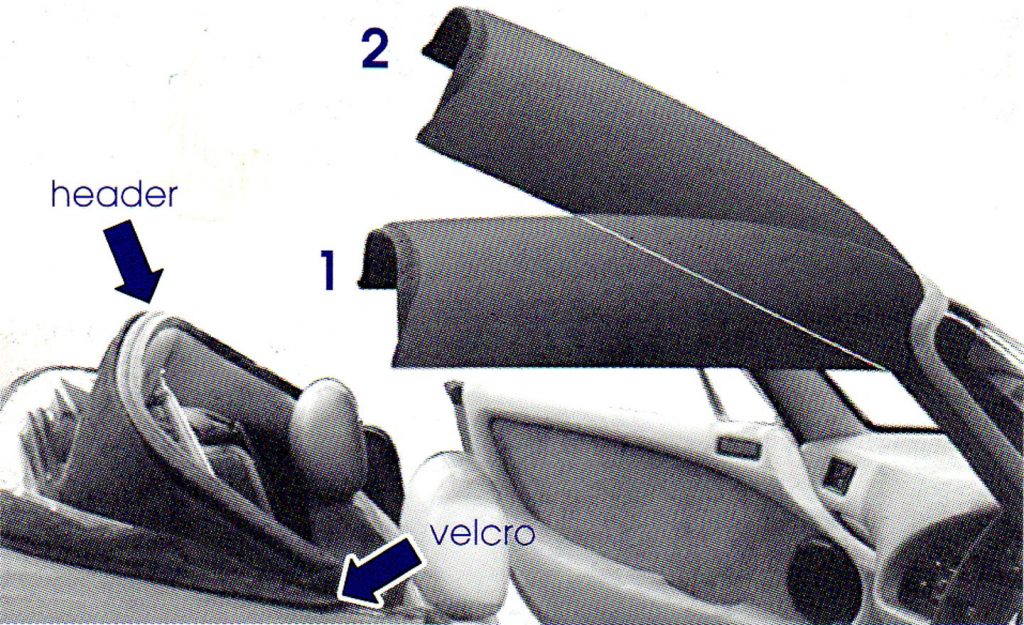
Holding the roof panel at the side and rear tilt the panel up (position 2) and pull back from the windscreen frame. Place the hood panel in its protective cover and store in the boot.
Finally, after releasing the velcro fastening, lower the header down fully.
Please note If the rear header rail is to be left in the collapsed position for a long period, ensure the rear window is not unduly creased.
The vehicle can be driven with the header either fully collapsed or locked in the targa position.
Hood storage
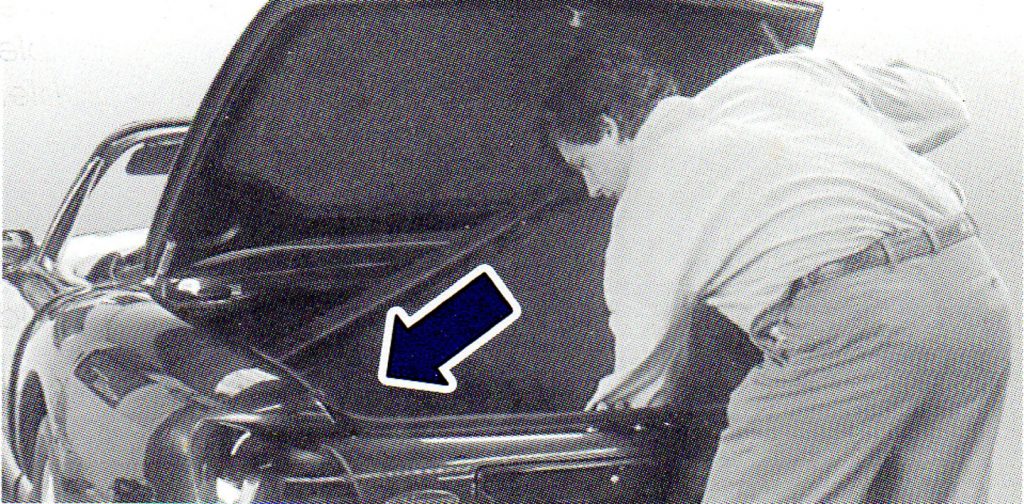
To place the panel in the boot hold it vertically with the windscreen edge up and the roof material facing rear, Place the left hand side into the boot, push over to the left and then lower the right hand side in.
Hood replacement
With the header fully collapsed, open both doors and offer the hood panel up to the windscreen frame ensuring that the panel locates on the central peg, (position 2). Lower the hood panel into position I, it will support itself. Raise the rear header locating the rear edge of the roof panel into the recessed section.
Finally push the over centre stays into position. Less force is required if they are pushed as close to the centre as possible. Please note. The weather seals inside the car at the base of the rear header should be placed overlapping the doorframe.
To gain maximum protection against the elements, smooth the roof material downwards at the base of the rear header onto the velcro strip, where the material meets the body.
Windscreen washer reservoir
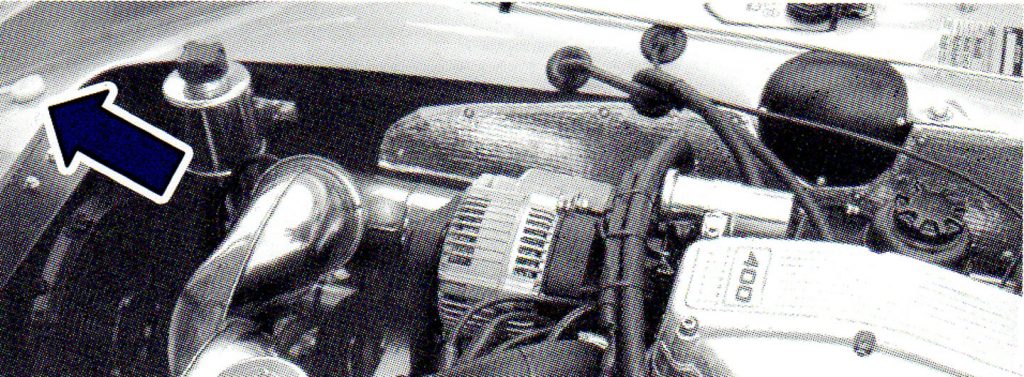
Refill with a mixture of clean water and windscreen washer fluid.
Check that the fluid level is up to the MAX line on the reservoir.
Brake fluid
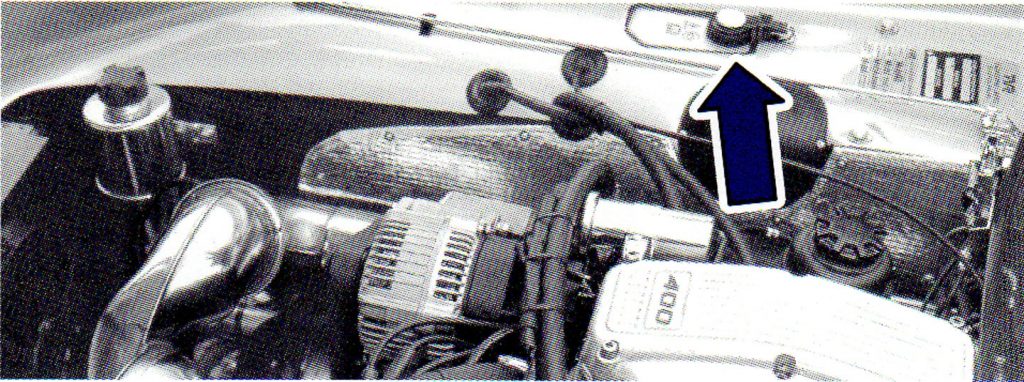
Only top up with Mobil Universal Brake and Clutch Fluid SAE J1703.
Clutch fluid
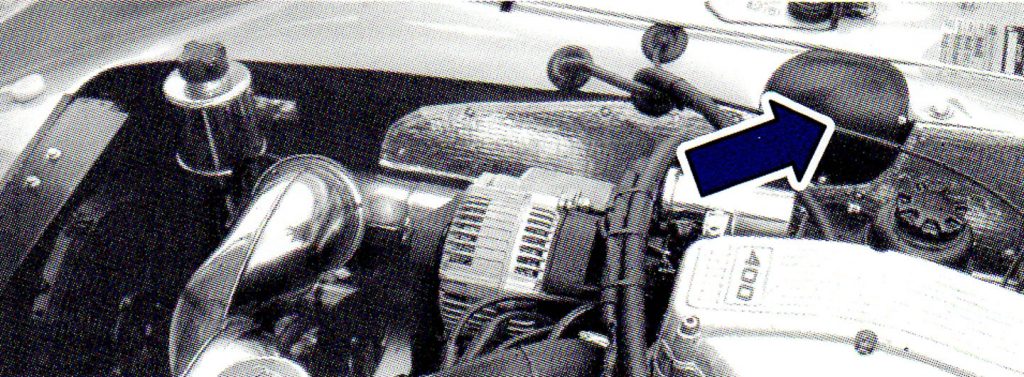
Located under the cover which is fastened by four screws. Check that the fluid level is up to the MAX line on the reservoir. Only top up with Mobil Universal Brake and Clutch Fluid SAE J1703
Power steering fluid (where fitted)
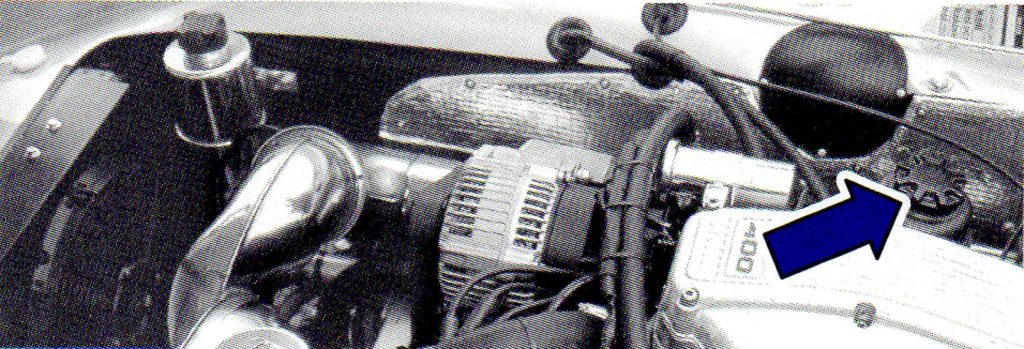
Remove the reservoir cap/dipstick. Check the fluid level is between the top mark on the dipstick and the bottom of the dipstick. Only top up with Mobil ATF 220.
Engine oil dipstick
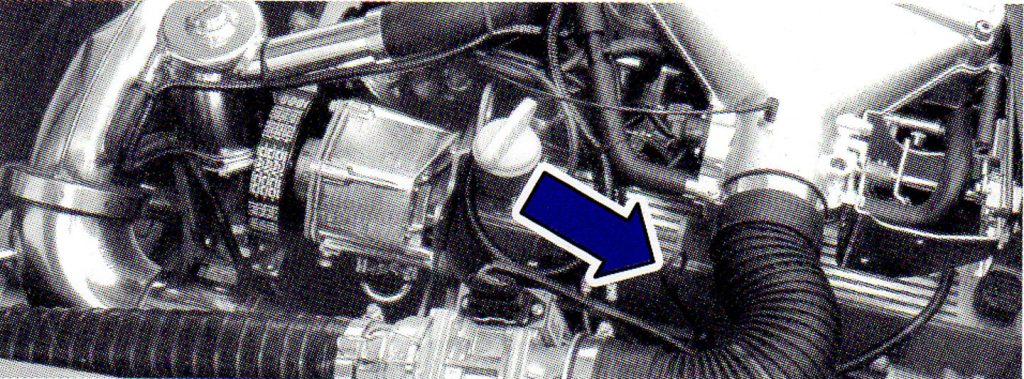
The oil should always be checked on level ground with the engine switched off, Pull the dip stick out and wipe clean to ensure a true reading. Re-insert the dip stick and pull it out. The level of oil should read between the min and max marks on the dipstick. Please note. Over filling may cause oil wastage. Running the engine with an oil level below the minimum mark could result in considerable damage being caused.
Engine oil filler cap
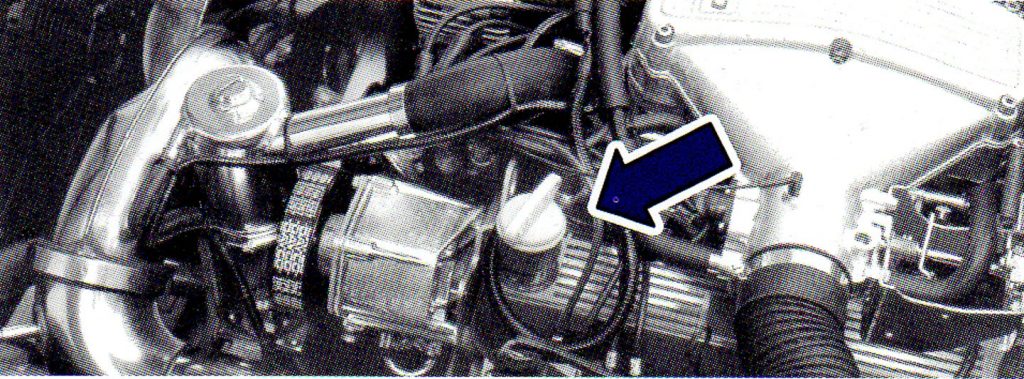
To remove, unscrew the cap in an anti clockwise direction and top up with TVR recommended oil if required.
Engine oil specification
(up to 1000 miles) Mobil 10W/30 mineral – 5 litres
(up to 6000 miles) Mobil 15W/40 mineral – 5 litres
(after 6000 miles) Mobil 1 SAE 5W/50 synthetic – 5 litres
Used engine oil
Prolonged or repeated contact may cause serious skin disorders. Avoid excessive contact, and wash thoroughly after contact.
Environment protection
It is illegal to pollute drains, water courses or soil. Use authorised waste disposal facilities to dispose of used engine oil, If in doubt, contact your local authority for advice.
Please note. Under no circumstances should mineral and synthetic oils be mixed. Ensure that the same oil specification is used when topping up. It is recommended to always have oil changes performed by your TVR dealer.
Cooling system
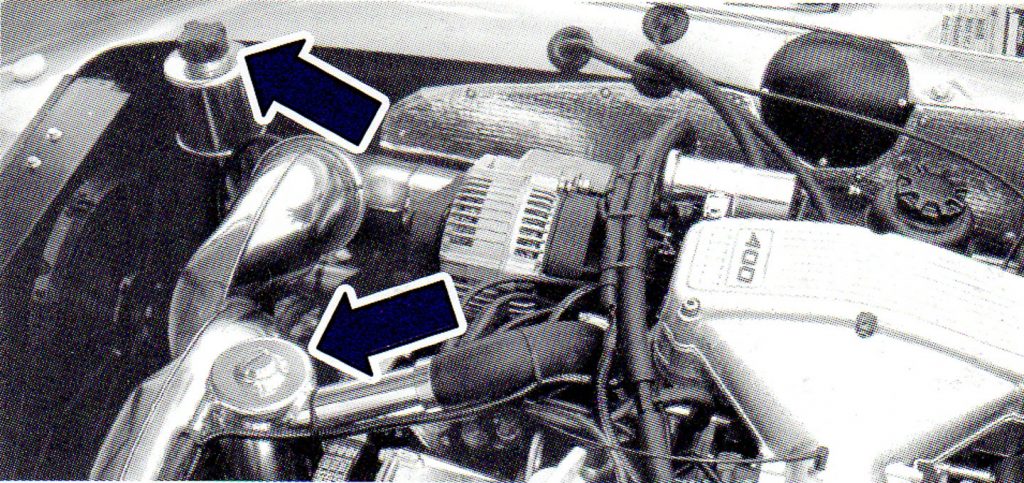
The cooling system has an aluminium header tank , which has a brass screw on the top, and an aluminium expansion tank with a blue pressure cap which is situated at the front right of the engine bay.
After any work involving replacement of the coolant, check all hoses and clips are secure and turn the heater control to the full hot position.
Fill the cooling system from the header tank with a mixture of 50% Glycol antifreeze and water.
Remove the bleed plug from the top right hand corner of the radiator and allow the coolant to escape until no bubbles are present. This should take between 15-30 seconds to complete, and it is worth gently tapping the top of the radiator to dislodge small air bubbles. Replace the bleed plug whilst an assistant is topping up the coolant in the header tank. If the level in the header tank falls below the top of the outlet to the top hose, air will be drawn into the radiator and the whole process must be repeated. Fill the header tank to the top. Half fill the expansion tank and fit the brass screw to the header tank and the blue pressure cap to the expansion tank. Start the engine and run it until the cooling fans cut in. Ensure that they cut out again. Check that the heater is blowing hot air. Turn off the heater and check that the air starts to become cooler. Stop engine, allow to cool and check water level.
Please note. Do not remove the radiator bleed screw, the brass screw or blue pressure cap whilst the engine is running, in an attempt to bleed air from the system. This will usually draw air into the system.
Battery
Located at the bottom of the passenger footwell behind the kick panel.
Starting with a flat battery
If your vehicle has a flat battery, it can be started with the assistance of a second battery. To jump start the vehicle:-
- Switch off all unnecessary electrical loads,
- Connect one end of the jump lead to the positive (+) terminal on the booster battery and the other end to the positive terminal on the flat battery.
- Connect one end of the other lead to the negative terminal on the booster battery and the other end to the negative terminal on the flat battery. Please note, Ensure that one lead does not touch the clamp on the other ‘— lead when connecting to the terminals.
- Start the engine in the vehicle which has the booster battery, allow it to run for a few minutes.
- Start the engine in the vehicle with the flat battery. If it starts and runs smoothly, carefully disconnect the jump leads in reverse order.
Towing the vehicle
Towing eyes are provided on the front of the vehicle for tow rope attachment. When the vehicle is being towed, the ignition switch should be switched on (steering lock released and ignition warning light illuminated), The indicators, horn and brake lights will also be operational. Assistance from the brake servo will be lost after the first two or three applications of the foot brake, this will increase the force required to depress the brake pedal.
Changing a wheel
Jacking
The jack and wheel brace are located in the boot within a protective cover. Warning: Do not attempt to jack up the vehicle if it is on uneven or soft ground, Do not attempt to work under the vehicle if it is supported only by the jack, always use axle stands.
Spare wheel
The narrow section space saver spare wheel is supplied as standard and is located in the boot, and is for temporary use only. When fitted, the vehicle must not be driven at speeds in excess of 50 mph (80 kph), In addition to the speed restriction the vehicle must not be subjected to fast cornering, fierce acceleration or heavy braking, unless it is necessary to do so in an emergency, If the tread depth is less than the legal requirement or the tyre is damaged in any way, it must be replaced. If the temporary spare wheel is used on the front of the vehicle, there may be a tendency under braking for the vehicle to pull to the side that the spare wheel is fitted, TVR recommend that the original wheel and tyre be repaired as soon as possible and refitted to the vehicle thus prolonging the life of the spare wheel. Only one spare wheel should be used at any one time.
Before attempting to change a road wheel, first apply the handbrake and place the vehicle in 1st or reverse gear. If the vehicle needs to be jacked up whilst on a slope, ensure that the two opposite wheels are securely chocked.
- Place the jack beneath one of the chassis tubes and raise until the jack is tight against the tube. Please note. The jack should only be placed under one of the chassis tubes and not under any part of the floor pan.
- Remove the nut cover plate where fitted. (The key is located in the jack bag in the boot.)
- Loosen the four wheel nuts.
- Raise the jack until the appropriate wheel is off the ground,
- Remove the wheel nuts and take away the wheel.
- Replace the wheel with the spare and reverse the removal procedures.
- Re-tighten the wheel nuts when the vehicle is lowered to the ground. As soon as it is practical check the wheel nuts with a torque wrench, the correct torque is 74 lbs/in, The above procedures also apply if a full size wheel is fitted as an optional extra.
- Replace the wheel nut cover, (where fitted).
Fuse and relay panel
The fuse and relay panel is located on the passenger side bulkhead beneath the dashboard, To gain access pull away the footwell kick panel.
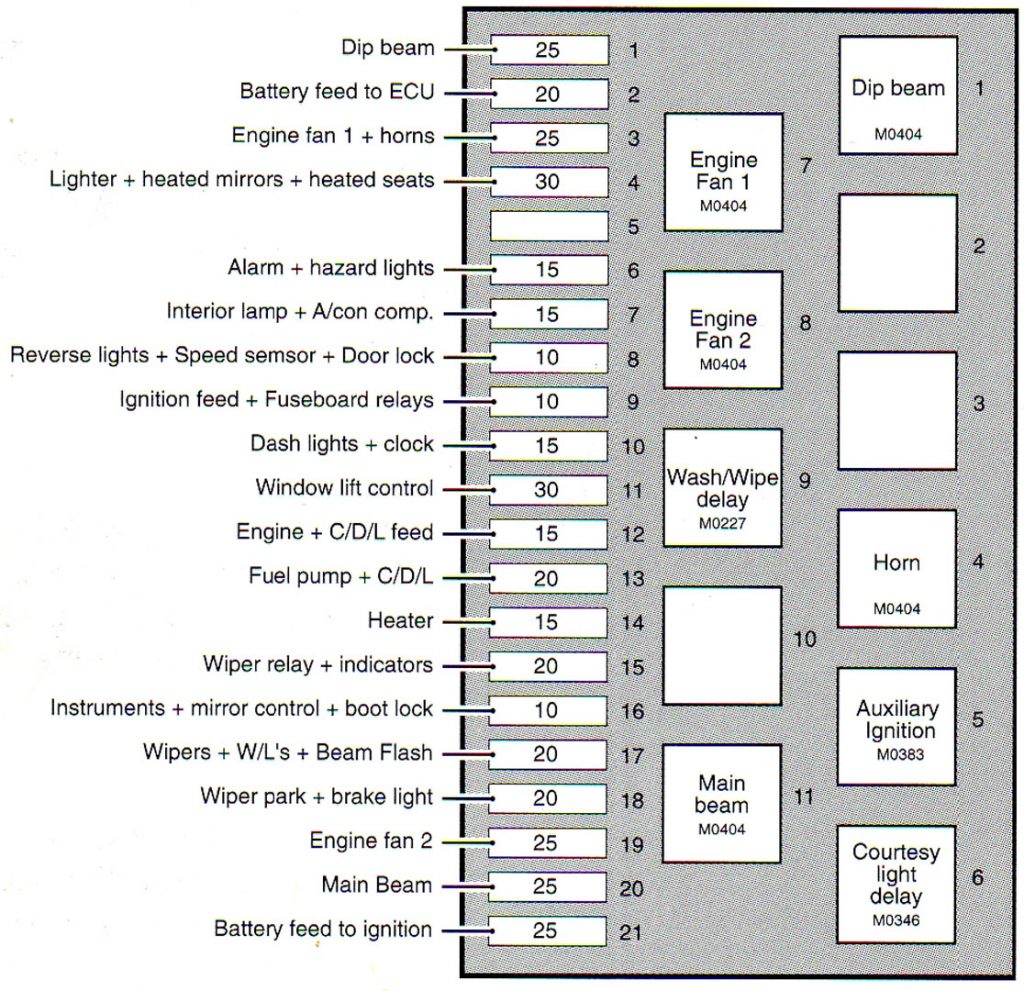
Bulb replacement
Please note. Before attempting to replace any faulty bulbs on the vehicle, the ignition should be switched off.
Interior light – 5 watt bulb
Insert a screwdriver behind the lens of the interior light, position a rag behind the screwdriver to safeguard against marking the trim surround, Lever the unit out to reveal the bulb. Replace the bulb place the assembly back into the aperture and push back into position.
Sidelight and headlight
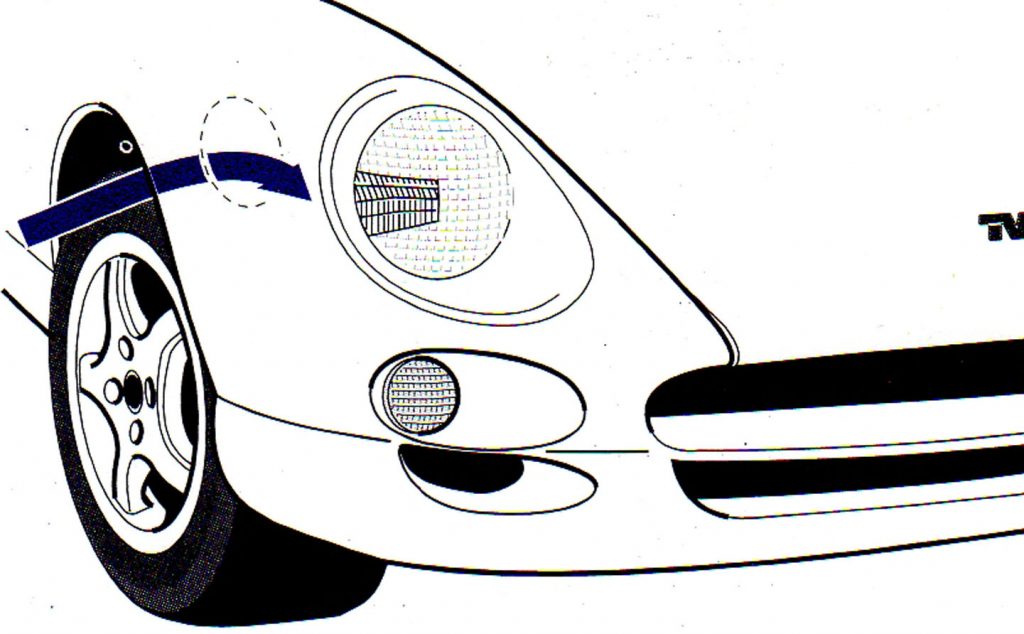
Sidelight – 5 watt bulb
Headlight – 55/65 watt bulb
Remove the access panel located in the front wheel arch. Remove the rubber boot on the back of the headlamp unit. Unhook the spring clip and remove the bulb. Replace the bulb and refit the clip, rubber boot and access panel.
Indicator – front 21 watt bulb
Remove the access panel located in the front wheel arch. Reach through the access hole to the rear of the indicator assembly. Unscrew the indicator housing. Change the bulb and refit the housing.
Indicator – side markers 5 watt cap less bulb
Prise the rear of the unit from the wing slightly (be careful not to mark the paintwork) to expose a small spring clip, press the spring in and remove the unit. Replace the bulb and refit the indicator putting the front edge in first.
Rear light cluster
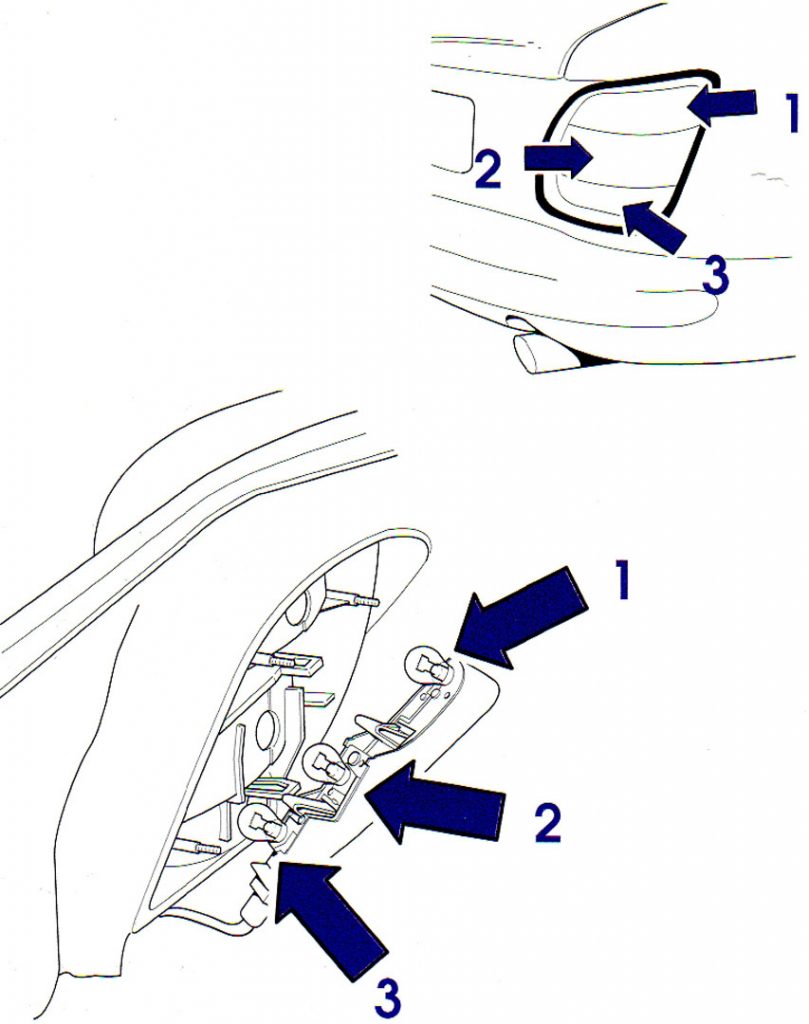
- rear light / brake light – 5/21 watt bulb
- indicator – 21 watt bulb
- (passenger side) reversing light – 21 watt bulb
- (driver side) fog light – 21 watt bulb
Press the tab levers and open the back of the unit, this gives access to all the bulbs, Replace the faulty bulb and close the back of the unit until it “snaps” shut.
Rear number plate lights – 5 watt bulbs
There are 2 number plate lights located behind the number plate. Undo the 2 screws and remove the lights. Replace the faulty bulb.
Cleaning
Exterior
By Hand.
The body work can be washed using a mild detergent or specialist car shampoo, A low pressure hose pipe should be used to rinse the vehicle. Specialised cleaners should not be used when cleaning the road wheels, Using a power wash.
Power washing the bodywork is quite acceptable However, do not spray the high pressure jet directly at the paintwork, or the roof/door seals, Do not power wash the door release button or the engine bay, Automatic car wash
The use of automatic car washes is not recommended as the roof/door seals are not designed to withstand the direct force of high pressure water jets. Also the detergents used and the cleaning action of the brushes may damage the paintwork.
Interior
Vinyl/Leather
Vinyl and leather should be cleaned with a damp cloth. However, a little mild detergent or proprietary upholstery cleaner may be required to remove ingrained marks. Leather upholstery will benefit from a periodical application of Hide Food. Carpets
Carpets should be cleaned regularly with a vacuum cleaner to remove dust and dirt. Mild detergents and warm water may be required to remove any difficult marks or stains.
De-icing
Any approved de-icing fluid may be used on the rear window without causing damage to the plastic surface,-Please note. Make sure no de-icer gets on to the roof material. Do not scrape ice off the rear window, as this will almost certainly cause surface scratching.
Checks and servicing
Recommended Weekly Checks,
1 All exterior lights,
2 Oil level,
3 Coolant level,
4 Brake fluid level,
5 Clutch fluid level.
6 Power steering fluid.
7 Windscreen washer bottle.
8 Tyre pressure.
9 Spare tyre pressure.
10 Visual check for any fluid leaks.
If for any reason the vehicle is grounded or an object strikes the chassis from below, it is advisable to visually inspect the — chassis for signs of damage. If there is damage, the vehicle should be taken to your local dealer for a thorough inspection.
Service intervals
The following are recommended service intervals for the vehicle.
1000 miles
6000 miles
12000 miles
18000 miles
24000 miles
30000 miles
and every 6000 miles thereafter or every twelve months, which ever is reached first.
Please note All service work should be carried out either at the TVR Factory Service Department, or by a Factory approved service centre. A comprehensive list of service requirements is located within the Service Schedule Section. For further information contact your local dealer.
Warnings and Technical specifications
Catalytic exhaust system
In conjunction with a highly efficient engine management system designed to work with exhaust catalysts and a fuel tank vapour recovery canister, the catalytic exhaust system is designed to reduce emissions of exhaust gas pollutants and fuel vapour to a level well below the strictest European and Scandinavian legal limits, To maintain the effectiveness of the emission control system the following points should be observed:-
1) NEVER USE LEADED PETROL, even in an emergency, The emission system will only function correctly on unleaded fuel. Using 4 star or other grades of fuel containing lead will damage the vehicles catalytic convertors and exhaust gas oxygen sensors, Replacement of these components is expensive. The engine is designed to run on 98 (RON) octane (super green) unleaded.
2) Do not allow the car to run out of fuel. An irregular fuel supply, caused by a near empty tank, can cause engine misfires which may damage the catalytic convertors.
3) Ensure that the car is regularly serviced by a TVR Dealer or Approved Service Centre, All TVR Dealers have special diagnostic equipment necessary to check for the correct operation of the emission system.
4) Avoid all situations whereby unburnt or partially burnt fuel is allowed to enter the exhaust system. For instance, avoid unnecessarily long engine cranking periods, never run the engine with a sparking plug cap disconnected, and do not allow the car to coast in gear with the ignition switched off, It is inadvisable to push or tow start the vehicle, especially if the catalysts are hot. If the engine will not start because the battery is flat, use a pair of jump leads and a slave battery, If the engine misfires or seems to lack normal performance it is recommended that you drive, at low engine speeds, to the nearest TVR dealer.
5) Take care when parking the vehicle. The catalytic convertors and exhaust system can radiate a considerable amount of heat. The vehicle should not be parked over combustible materials, such as dry grass, leaves or paper.
6) Sealant or other materials should not be applied to the catalysts.
Brake and clutch
Certain brake and clutch components may contain asbestos based material. Precautions must be taken when servicing these components. Avoid any skin contact or inhalation of the dust. Servicing of these components should be carried out by qualified personnel only.
Fuel pump shut – off inertia switch
Located above the passenger footwell behind the glove pocket. In the event of an accident the power to the fuel pump is cut off, thereby stopping the supply of fuel to the engine. If the switch has been actuated, the button on top off the switch will be in a raised position, and the Inertia warning light will illuminate for approximately three seconds each time the ignition is switched on.
Should the Inertia Switch require resetting please contact your dealer.
Oils and lubricants
Engine (after 6000 miles)
Mobil 1 SAE 5W/50 synthetic – 5 litres
Gearbox
Mobil ATF 220 – 1.4 litres
Differential
Mobil SHC 80W 140 ID – 1.6 litres
Cooling System
Mobil Universal Antifreeze – 12 litres
Brakes and Clutch
Mobil Universal Brake and Clutch Fluid SAE J1703 Wheel Bearings (and other grease points) Mobiltemp Grease SHC 100
CV. Joints
Mobil Grease Special NLGI 2
Power Steering (where fitted)
Mobil ATF 220
Please note, TVR use and recommend Mobil products, Failure to use these products could effect vehicle performance and reliability and may also invalidate the warranty,
Bodyshell
Two seat two door convertible manufactured in glass reinforced polyester resin. Laminated sundym windscreen with frameless electrically operated door windows, One piece removable roof panel with folding rear header rail.
Interior
Individually reclining seats trimmed in leather with adjustable head restraints. Full Hide interior trim is available as an option. Walnut veneered dashboard with comprehensive instrumentation including speedometer, tachometer, oil pressure, water temperature and fuel gauge together with a voltmeter and electric clock. Electrically operated boot release.
Chassis
Jig formed multi tubular steel frame chassis, phosphated and powder coated for corrosion resistance.
Suspension
Front.
Unequal length wishbones, coil springs, telescopic shock absorbers and a forward running anti-roll bar.
Rear.
Unequal length wishbones, coil springs, telescopic shock absorbers. Constant velocity sliding driveshafts from centrally mounted differential. Rear anti – roll bar
Braking
260 mm diameter ventilated front disc brakes with 273 mm diameter rear discs. Servo assisted with front/rear split dual circuits.
Steering
Unassisted AJP rack and pinion, adjustable column, 2.5 turns lock to lock, 350 mm leather covered steering wheel. Power assisted 2.2 turns lock to lock.
Wheels and tyres
Front 15″ x 7J aluminium alloy wheels fitted with Bridgestone S02 – 205/55 ZR low profile tyres.
Rear 16″ x 7.5J aluminium alloy wheels fitted with Bridgestone S02 – 225/50 ZR low profile tyres.
Recommended tyre pressures
Front 22 lbs sq/in Rear 24 lbs sq/in Spare 60 lbs sq/in
For high speed continental driving or when fully loaded with luggage Front 25 lbs sq/in Rear 28 lbs sq/in
Transmission
5 speed manual gearbox with hydraulically operated clutch,
Gear ratios:-
1st 2.95:1
2nd 1.94:1
3rd 1.34:1
4th 1.00:1
5th 0.73:1
Limited slip differential 3.45:1
Engine
Engine 4.0
90 degree alloy V8 engine
Capacity (cc) – 3950
Bore/stroke (mm) – 94 x 71
Compression Ratio – 10.0:1
Max rpm – 6250
Max power – 240 bhp @ 5600 rpm
Max torque – 270 ft lbs @ 4000 rpm
0 to 60 mph – 5.1 secs
0 to 100 mph – 12.5 secs
Maximum speed – 152 mph
Engine 4.5
90 degree alloy V8 engine
Capacity (cc) – 4558
Bore/stroke (mm) – 94 x 82
Compression Ratio – 9.5:1
Max rpm – 6250
Max power – 285 bhp @ 5500 rpm
Max torque – 310 ft lbs @ 4500 rpm
0 to 60 mph – 4.7 secs
0 to 100 mph – 11.2 secs
Maximum speed – 160 mph
Engine 5.0 HC
90 degree alloy V8 engine
Capacity (cc) – 4988
Bore/stroke (mm) – 94 x 90
Compression Ratio – 10.0:1
Max rpm – 6000
Max power – 340 bhp @ 5500 rpm
Max torque – 350 ft lbs @ 4000 rpm
Standing 1/4 mile – 12.2 secs
0 to 60 mph – 4.1 secs
0 to 100 mph – 10.2 secs
Power/weight ratio – 307 bhp/ton
Maximum speed – 167 mph
Fuel system
Electronic fuel injection
WARNING. This vehicle must not run on leaded fuel.
Dimensions
Length overall 4015 mm
Wheelbase 2282 mm
Width overall (inc. mirrors) 1865 mm
Height overall 1215 mm
Front track 1460 mm
Rear track 1460 mm
Ground clearance 132 mm
Fuel capacity 57 litres, 12.7 gallons
Weight 1060 kg
Warranty
This TVR has been built by TVR Engineering Limited, to the best of their ability within the present scope of the art known to specialist car manufacturers. This warranty is given in addition to and shall not affect the purchaser’s statutory rights as a consumer.
TVR Engineering Limited (hereafter known as the Company) warrants each motor car and each replacement part to be free from defects in material and workmanship , under normal use and service, and subject to the terms and conditions stated in this limited warranty, for the applicable Warranty Period set forth in paragraph 1(a)
1. (cf) General Warranty Coverage.
The Company warrants each new motor car to be free of defects in material and workmanship for a period of 12 months after delivery of the motor vehicle to the original owner. If any part or parts of a TVR car should prove defective within this prescribed period, and if such part of parts are submitted within 14 days to an authorised TVR distributor or dealer, the Company will cause such part or parts to be examined within a reasonable time and in the event of a fault due to defective workmanship or material being found the defective part or parts will be repaired or replaced without charge for the parts or labour involved in their replacement.
1. (b) Body Warranty Coverage. One (1) year.
The Company warrants the body shell, paint, exterior and interior trim, seats and upholstery and battery of each new motor car to be free from defects in material and workmanship for a period of one (1) year after delivery of the motor car to the original owner.
1. (c) Replacement Parts Coverage.
Parts, assemblies and components which are replaced under the warranty are warranted to be free from defects in materials and workmanship for 180 days from the date of replacement, or until the expiration of the period in which the general or body warranty remains in effect, whichever occurs last.
2. Extent of Company Obligations.
The obligations of the Company under this warranty are limited to the repair or, at its option, the replacement of a new or re-manufactured unit, without charge for labour or parts, of any part of assembly or component determined to be defective in material or workmanship during the applicable warranty period. All defective replacement parts become the property of the Company upon removal. All service under this warranty must be performed by an authorised TVR dealer importer or distributor at his place of business, unless prior authorisation is obtained from the Company. Persons dealing in the Company’s vehicles or spare parts are not authorised to bind the company in any way or to assume any obligation whether expressed or implied on behalf of the Company nor to give any warranty or guarantee nor make any representation on behalf of the Company.
3. Exclusion from Warranty Cover.
(a) Proprietary Equipment, The only warranties given for radio receivers, tape players and tyres are written warranties which are issued by the suppliers of such equipment,
(b) Maintenance, Service, Wear & Tear.
The obligation of the Company does not extend to maintenance services such as tune ups, cleaning of coolant, fuel and hydraulic systems, wheel balancing and alignment, and other service adjustment, nor to the repair or replacement of service items such as lubricants, fluids, spark plugs, wiper blades, filters, belts, coolant hoses, clutches, brake pads, nor to the deterioration of the paintwork, upholstery or any damage occasioned as a result of an accident or as a result of the negligent use of the vehicle howsoever — occasioned or any part, assembly or component as a consequence of normal wear and tear or exposure to the elements.
(c) Motor Racing, Alteration & Hire.
The obligation and warranties of the Company do not extend to vehicles used for motor racing or competition of any nature or to vehicles or parts which have been altered after leaving the Company’s factory, or which have been let out on hire, or from which identification numbers or marks have been altered or removed.
(d) Consequential & Incidental Loss or Damage.
This warranty neither covers nor extends to any consequential damage or expense including, but not limited to, inconvenience hotel or restaurant expenses, towing or parking fees, car rentals, nor the loss of time or use of the motor car.
4. Limitations of Warranties.
This warranty limits the duration of all implied warranties, including the implied warranties of merchantability and fitness for a particular purpose, to the time periods set forth in sub paragraphs 1 (a), 1 (b) and 1 (c). The warranty shall not be transferred to anyone unless the Company’s consent in writing has first been obtained upon receipt of the change of ownership card located at the rear of this warranty.
5. Obligations of the Owner as to proper Care and Usage.
The Company has no obligations under this warranty in the following circumstances:-
(a) if the essential maintenance services identified in the service coupon booklet and the maintenance instructions described in the owners handbook are not performed and followed at the prescribed Intervals.
(b) if failure or malfunction of the vehicle or any warranted part, component or assembly results from an accident.
(c) if failure or malfunction is caused by negligence in use of the vehicle.
(d) by performance of service, repair or modification otner than in accordance with the recommended servicing and repair procedures of the Company
(e) if the vehicle is registered or used in the United States of America, Canada, Hawaii, Guam, and the United States Virgin Islands or Outside Continental Europe In countries where different legislation on vehicle safety and environmental emission standards apply so as to render the European specification illegal and invalid.
(f) if the vehicle is modified or added to in any way not previously agreed by the Manufacturer in writing.
(g) if the limits for chassis load, axle load, pay load, permissible gross weight or axial pressure are exceeded,
6. Disputes.
The Company’s decision shall be final and binding in respect of any claim or dispute arising out of a defect or alleged defect in any vehicle or part. After the expiration of fourteen days from dispatch of notification of the Company’s decision the part or parts may be scrapped by the Company or returned to the purchaser ,ln which event transport charges are payable by the purchaser.
7. Return of Warranty Acknowledgment Card.
The obligations of the Company under this warranty shall not arise unless and until the Company shall receive the warranty Acknowledgment appearing at the end of this warranty, within 28 days from the date of purchase, duly executed by the original owner.
For TVR Engineering Limited: Peter Wheeler, Chairman
Please keep this booklet in your vehicle as to avoid unnecessary delay it must be shown to the authorised TVR distributor or dealer at the time the repair is requested.
Index
A
Air conditioning
Alarm and locking
B
Battery
Bodyshell
Bonnet Release
Boot Release
Brake Fluid
Brake Light Replacement
Brake Fluid Warning Light
Brakes 0-500 Miles
Braking System
Bulb Replacement
c
Catalytic Convertors
Change Of Ownership (See separate section)
Chassis
Checks & Servicing
Checks (weekly)
Cigar Lighter
Cleaning
Clock
Clutch Fluid Reservoir
Cooling System
D
De Icing
Demist and temperature controls
Dimensions
Door Mirrors
Driving from New
E
Electric Mirror Adjustment
Electric Mirror Select
Electric Window Switch
Electrical
Engine Bay
Engine Number
Engine Oil Dipstick
Engine Oil Filler
F
Fan Switch
Flash Facility
Front Suspension
Fuel Gauge
Fuel Injection Warning Light
Fuel Type
Full Beam Warning Light
Fuse And Relay Location
Fuse And Relay Panel Layout
Fuses
G
Gear Lever Gate
Gear Ratios
Ground Clearance
H
Handbrake
Handbrake Warning Light
Hazard Warning Switch
Head Restraints
Headlamp Bulb Replacement
Headlamp Dip Beam
Horn
Hood-Removal/Replacement
I
Ignition/Steering Lock
Ignition Warning Light
Indicator Bulb Replacement
Indicator Warning Light
Indicators
Inertia Switch
Instrument Illumination Switch
Interior Door Handle
Interior Door Lock Switch
Interior Light
Interior Light Bulb Replacement
Intermittent Wipe Speed Control
J
Jacking the Vehicle
Jump Leads
L
Lumbar support
M
Main Beam
O
Oil Pressure Gauge
Oil Pressure Warning Light
Oils and Lubricants
Owners Records
P
Paint Colour
Petrol Filling
Power steering fluid
R
Rear Brake Light Bulb Replacement
Rear Fog Light Switch
Rear Indicator Bulb Replacement
Rear Light Cluster
Rear Number Plate and Boot Light
Relays
Rev Counter
Reversing Light Replacement
Routine Maintenance
Running In
S
Seat Adjustment
Seat Belts
Seat Reclining Control Lever
Service Intervals (See also service section)
Side Light Switch
Spare Wheel
Specification
Speedometer
Starting Using Jump Leads
Steering
Steering Column Adjustment
Suspension
T
Tachometer
Temperature Controls
Towing The Vehicle
Transmission
Trim Colour
Trim Material
Tyre Pressures
Tyres
V
Ventilation Controls
Vents
V.I.N
W
Warning Lights
Warranty
Wash/Wipe Facility
Water Temperature Gauge
Wheel Change
Wheels And Tyres
Windscreen Demist Vents
Windscreen Washer Reservoir
Windscreen Wipers-intermittent speed control
Windscreen Wipers & Washers
